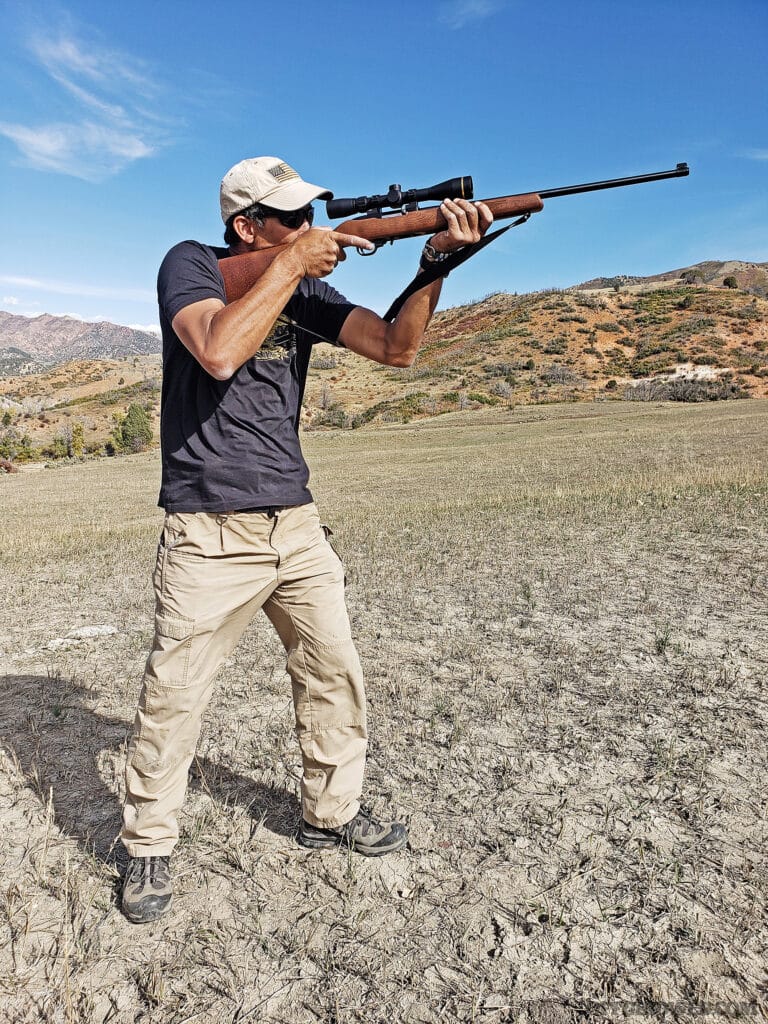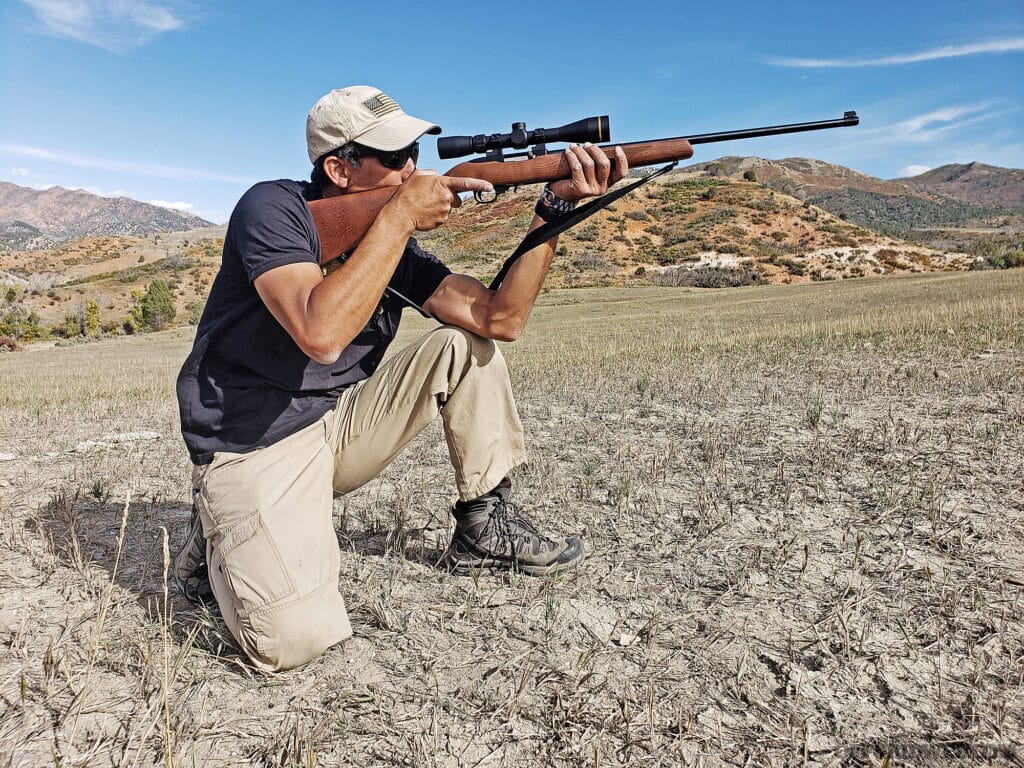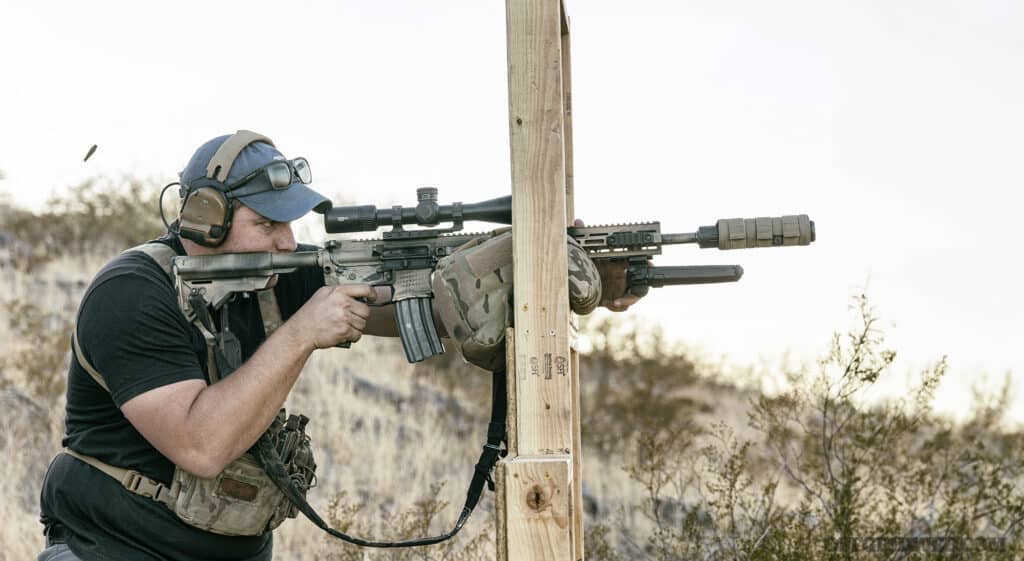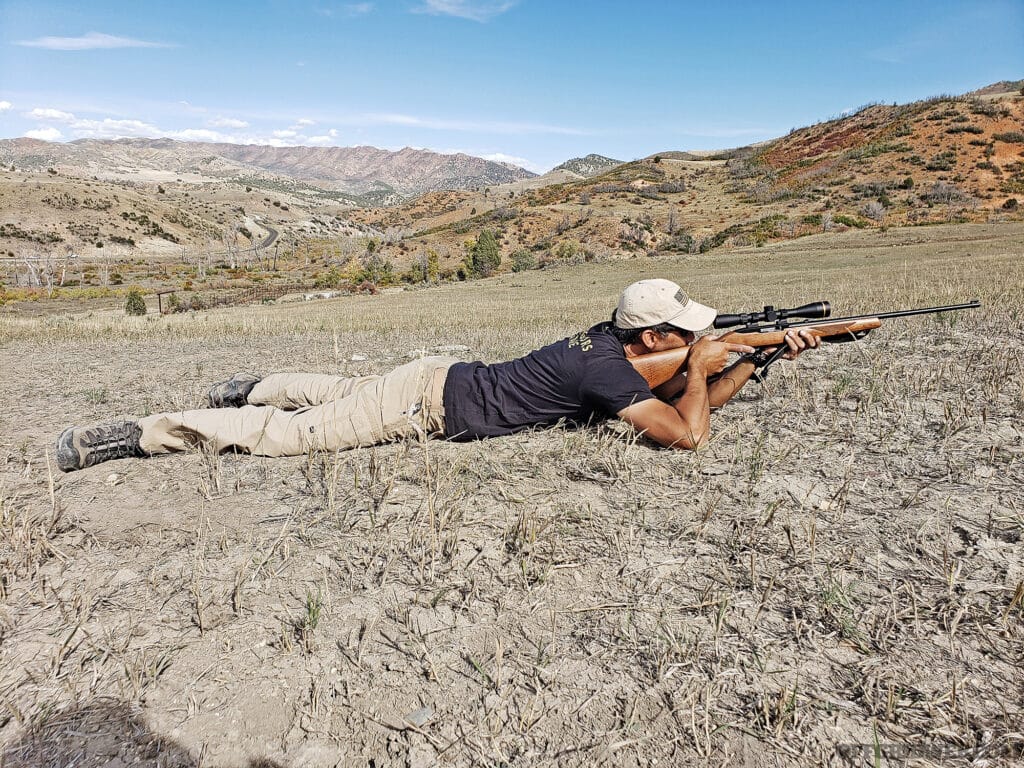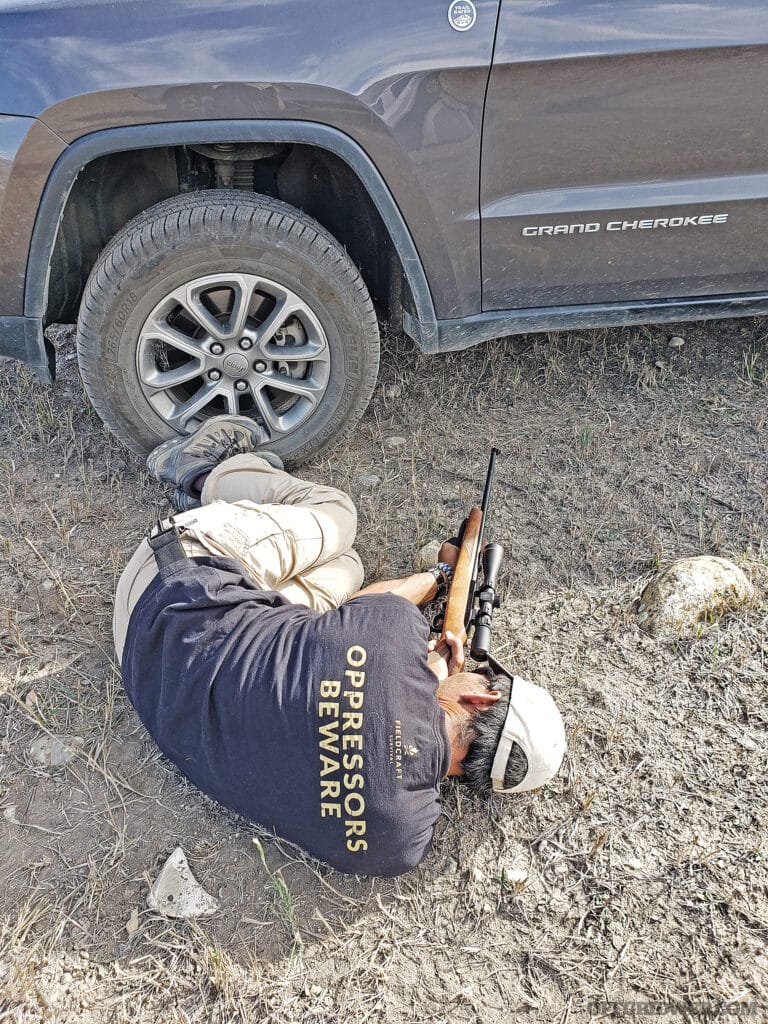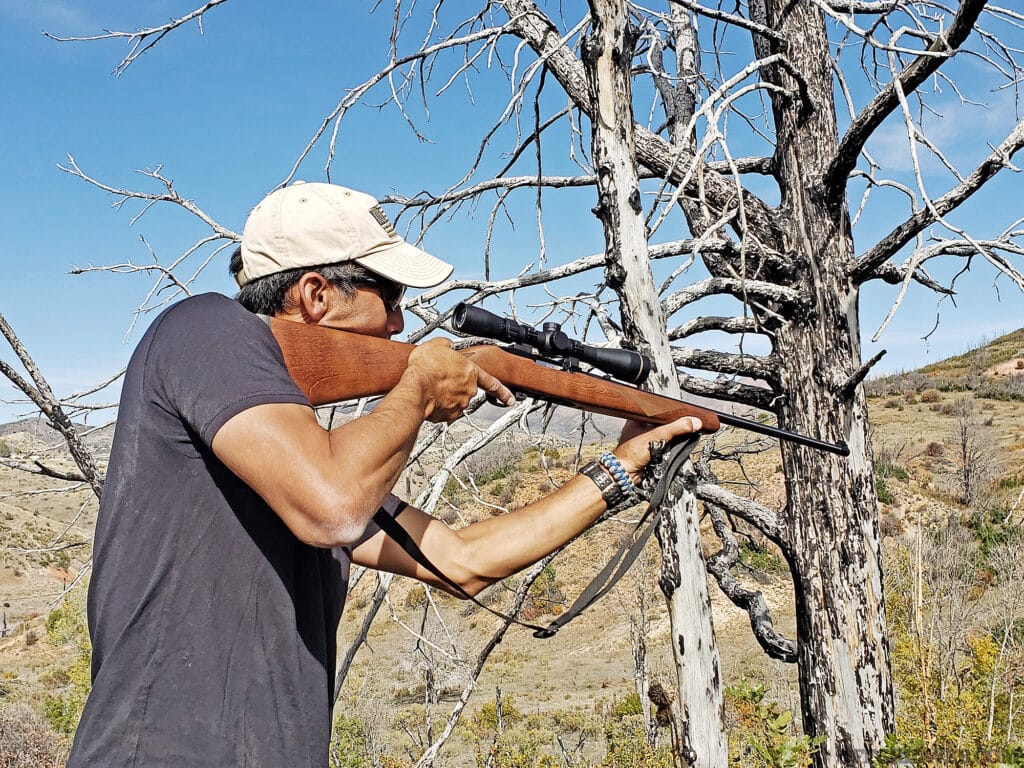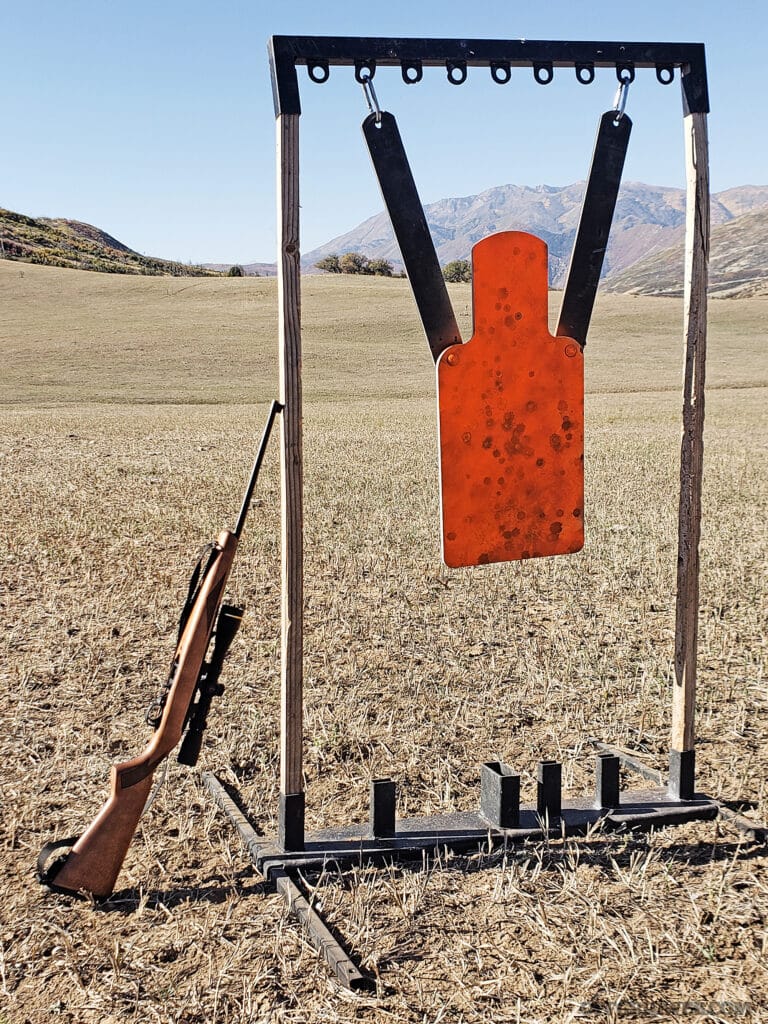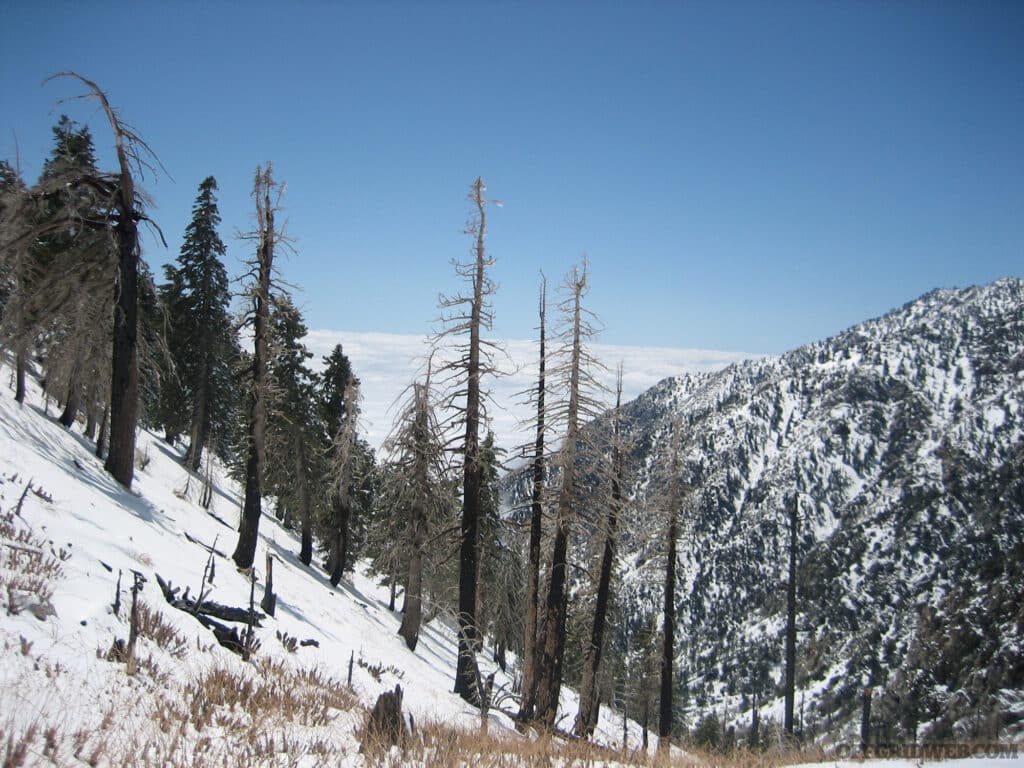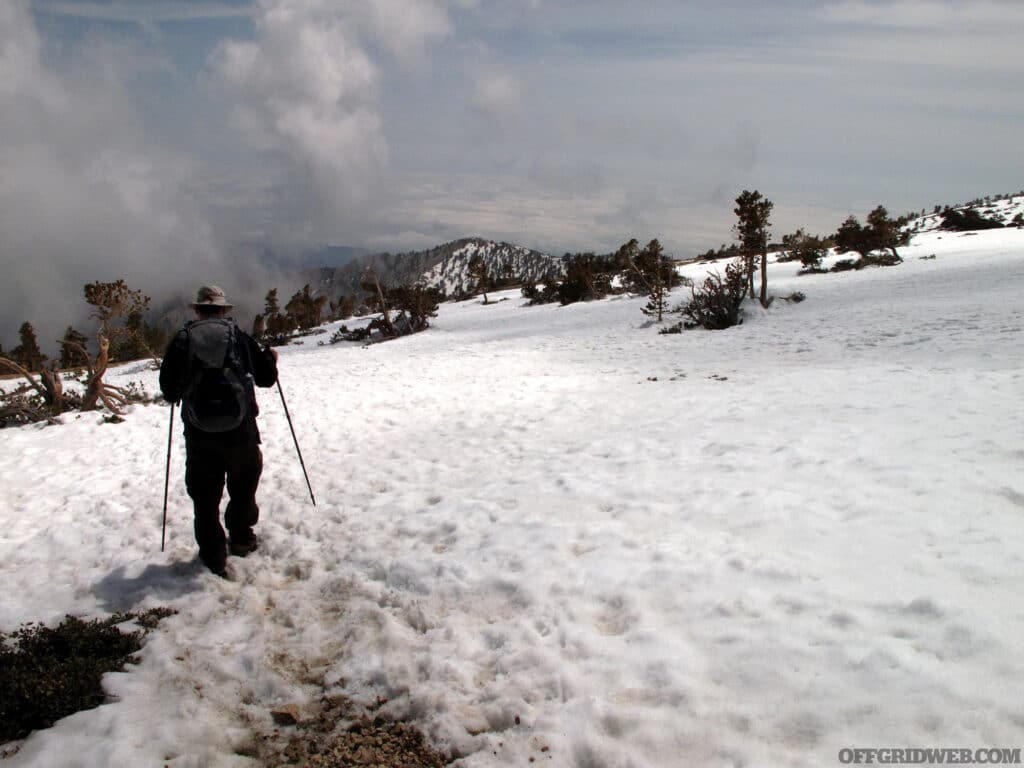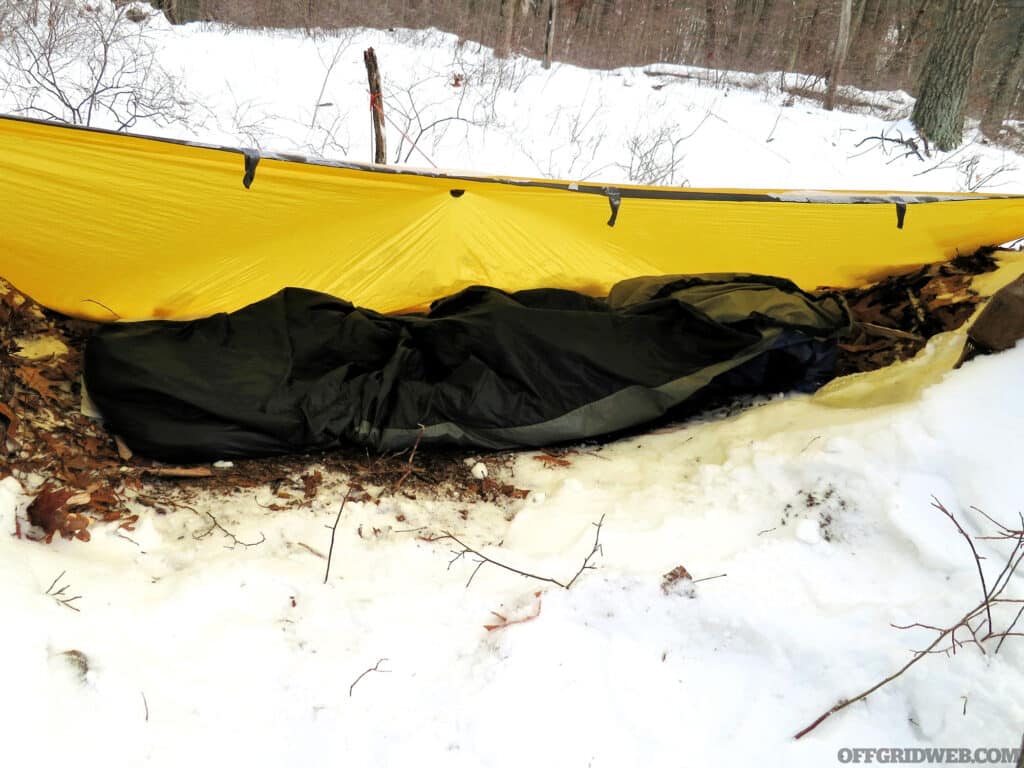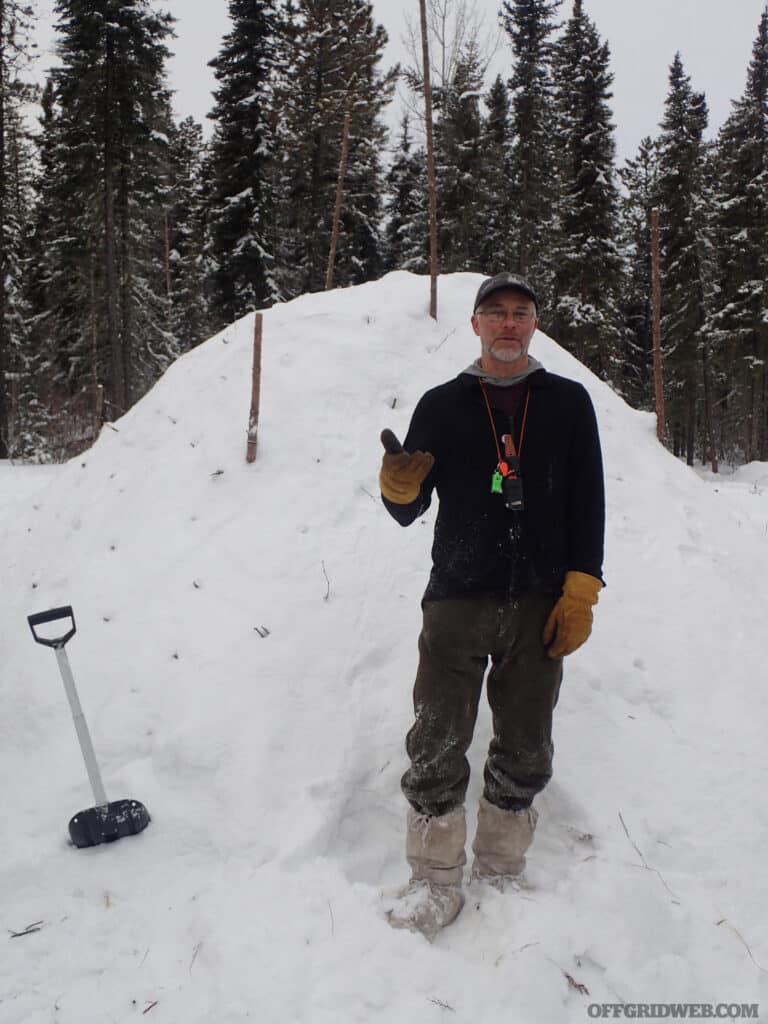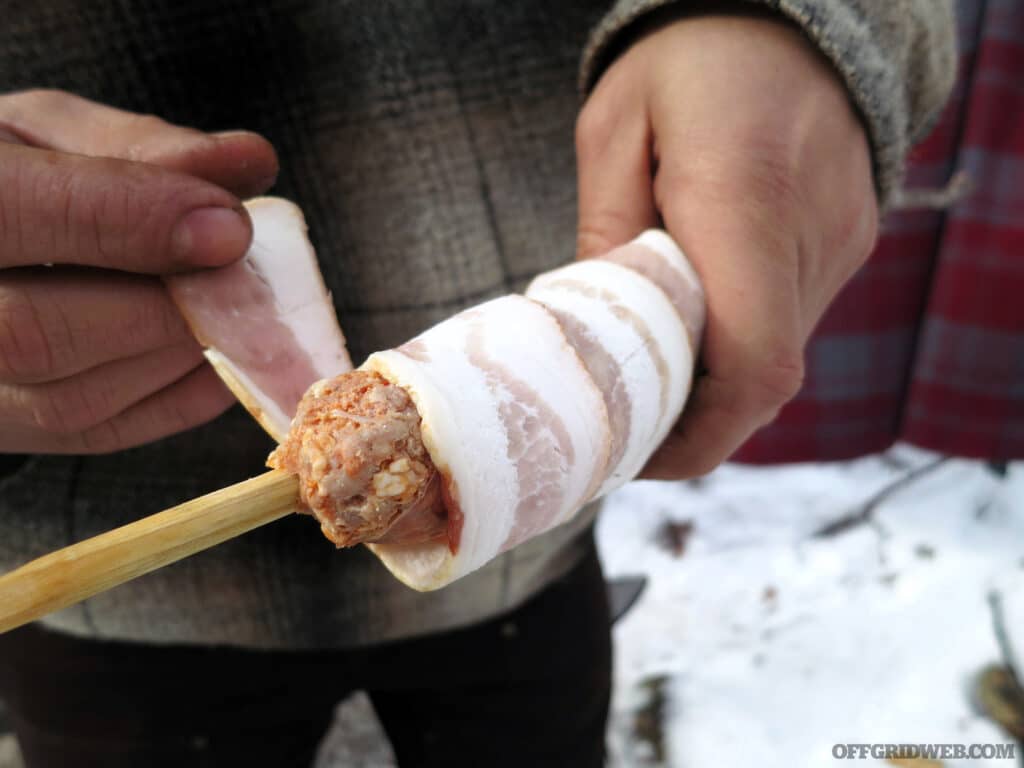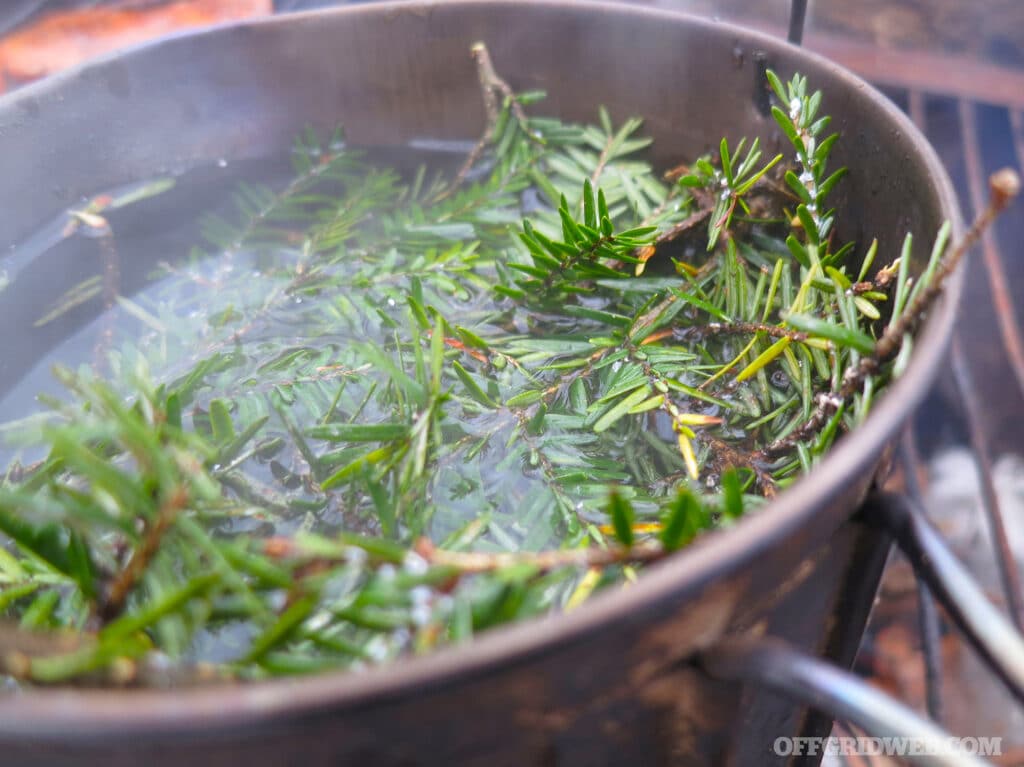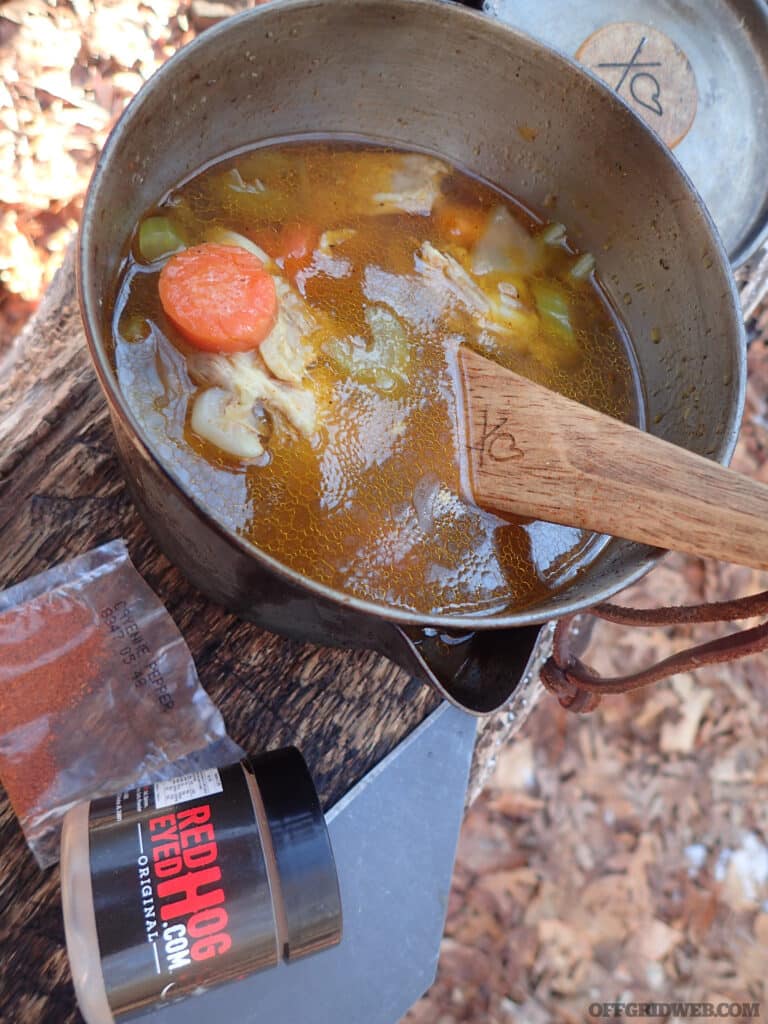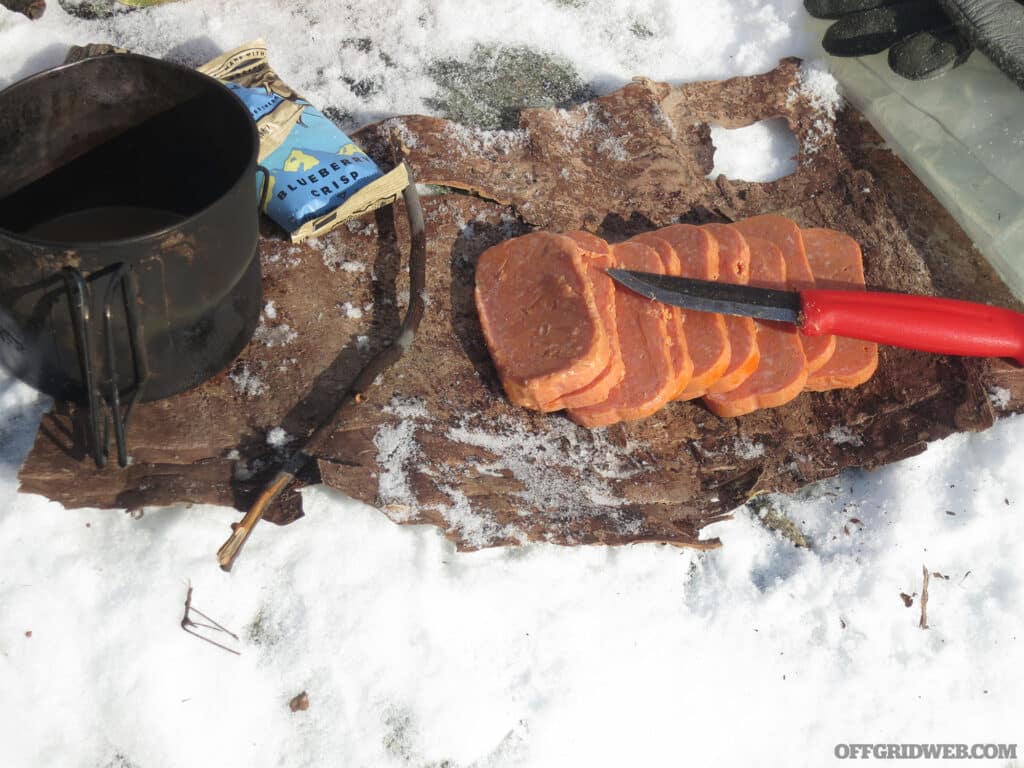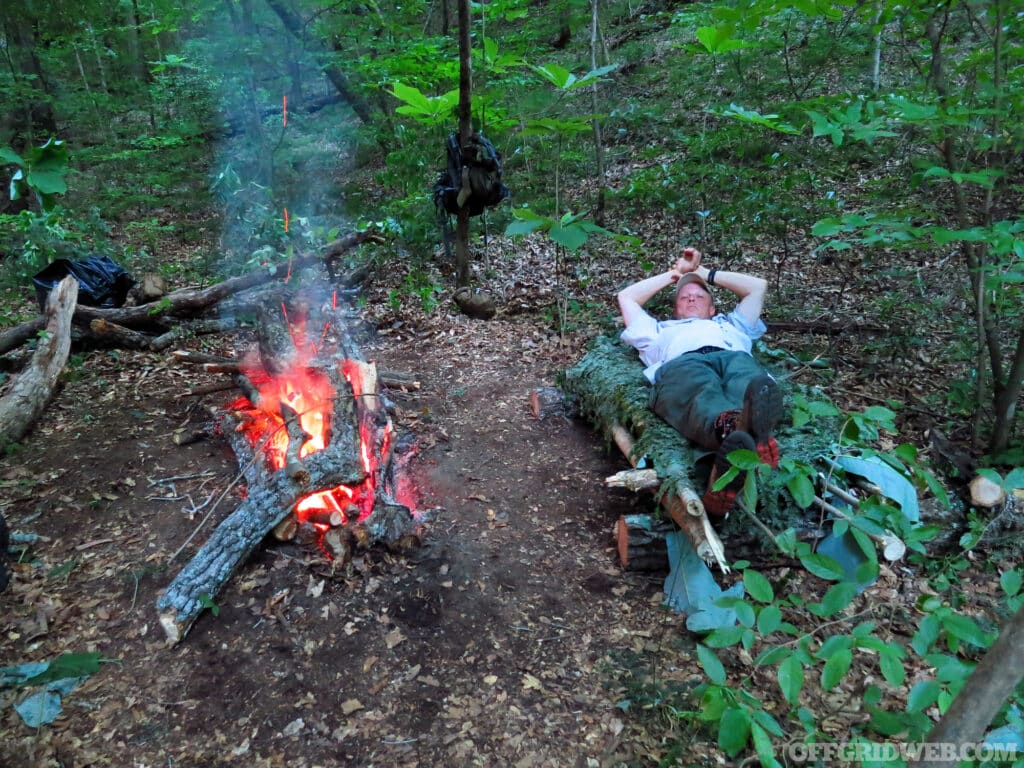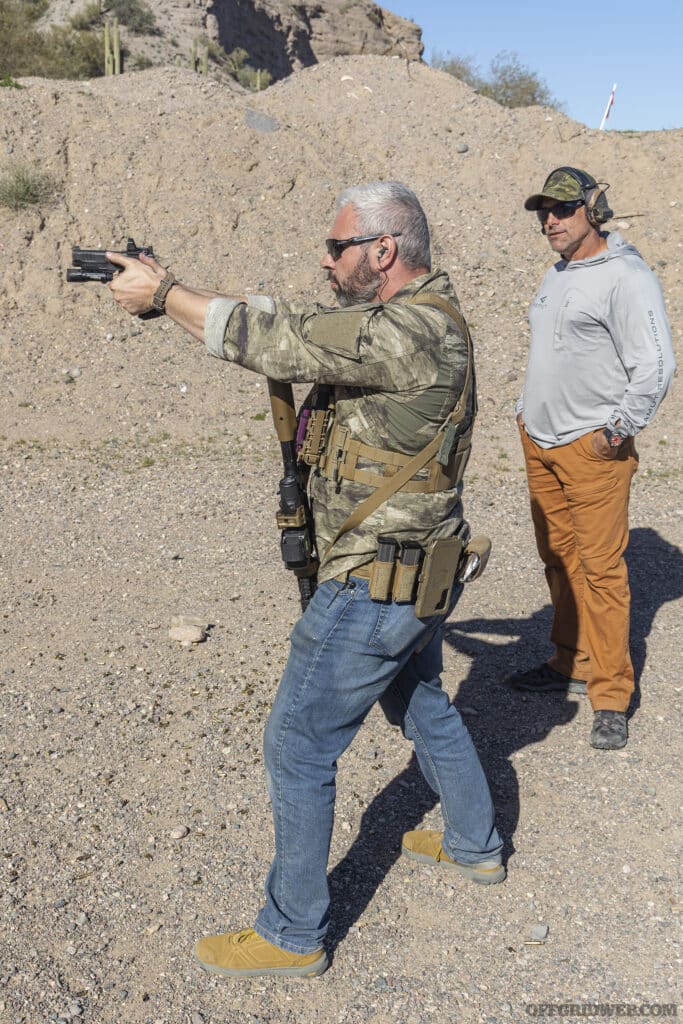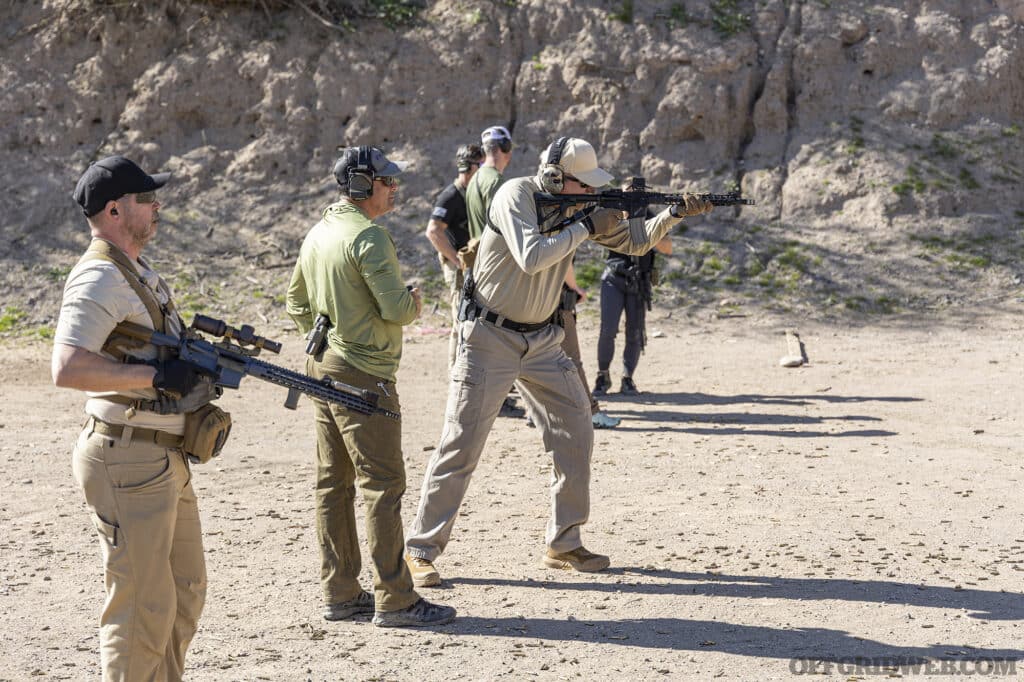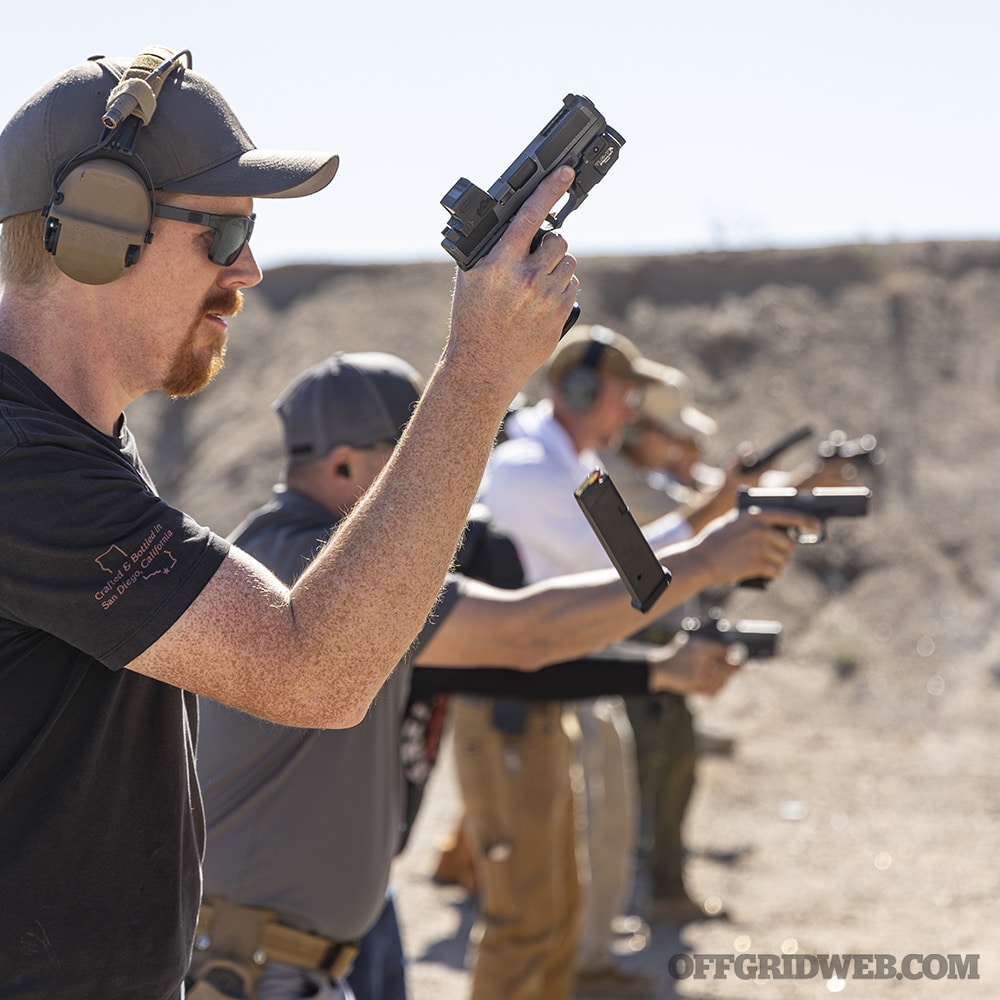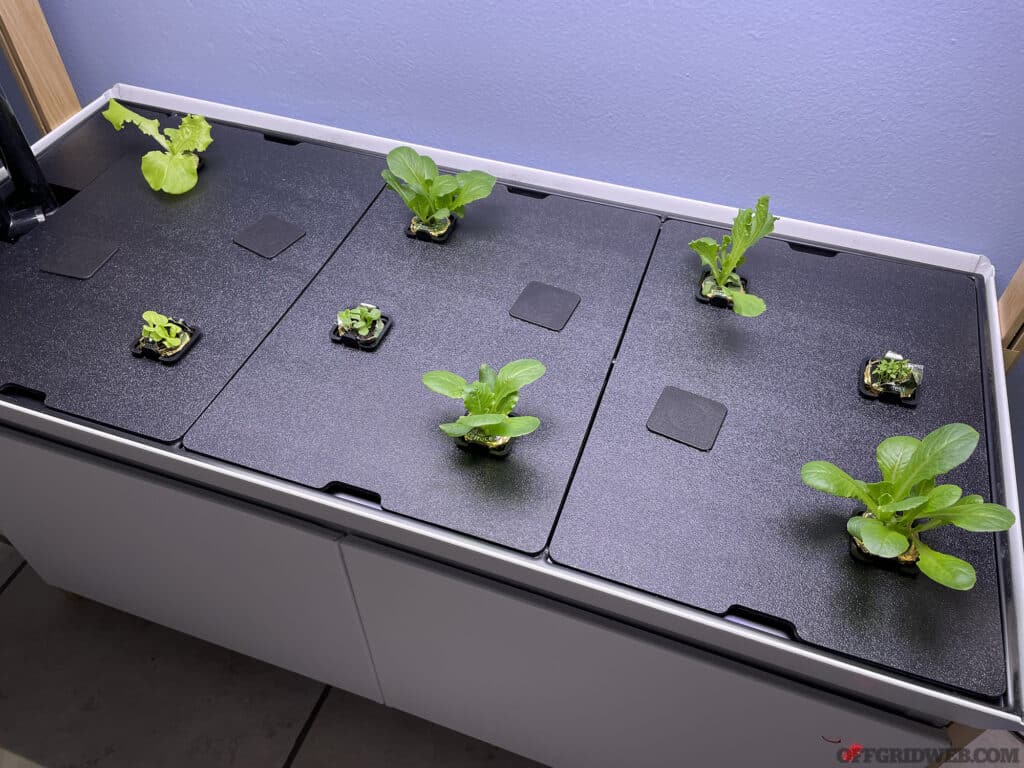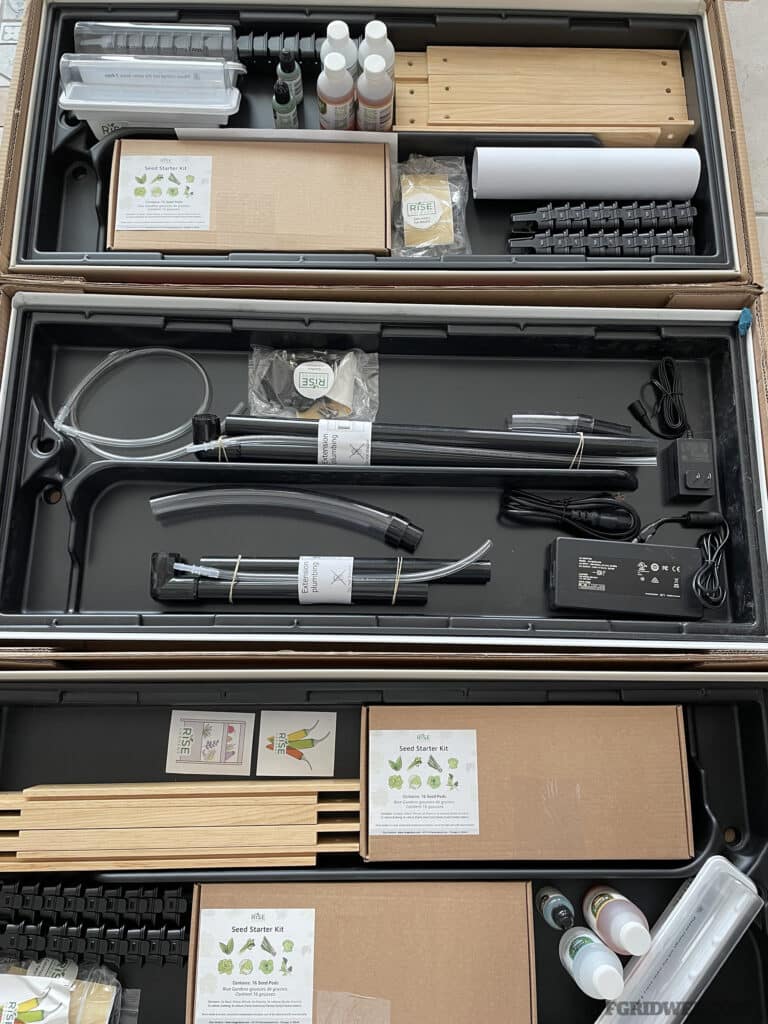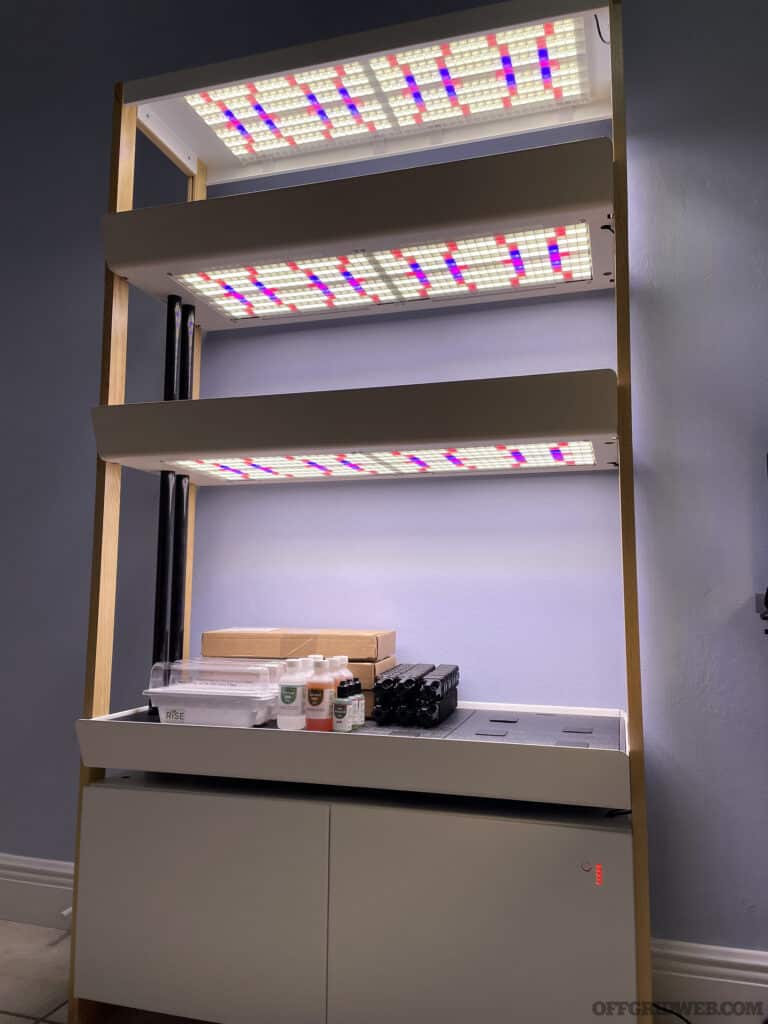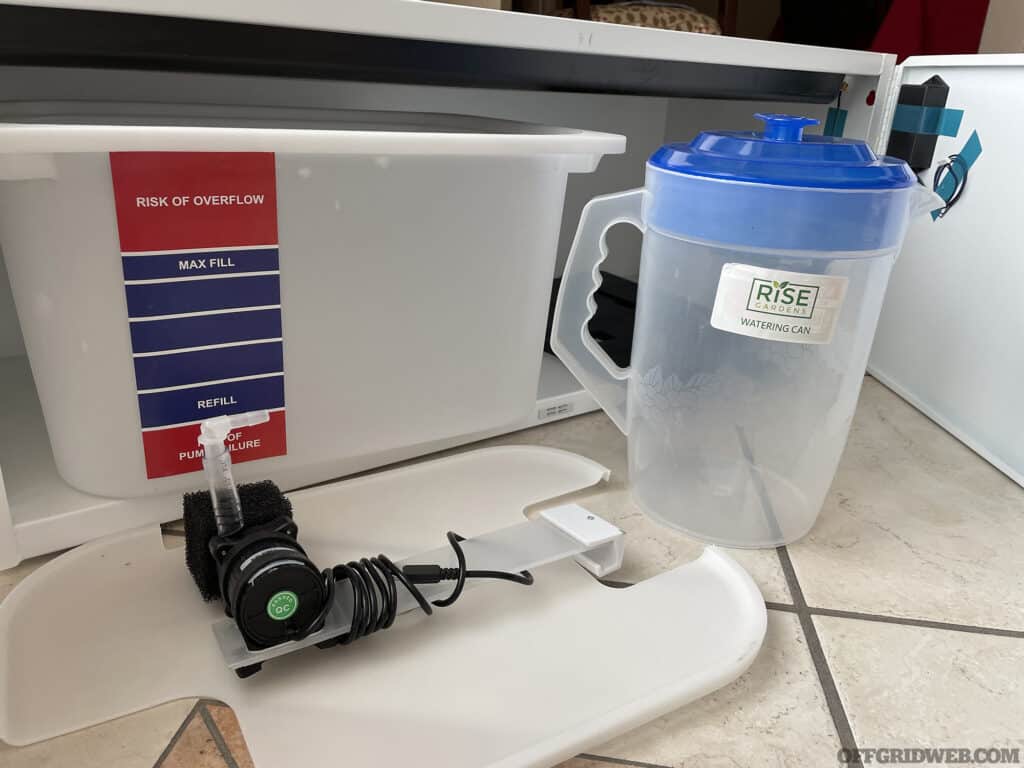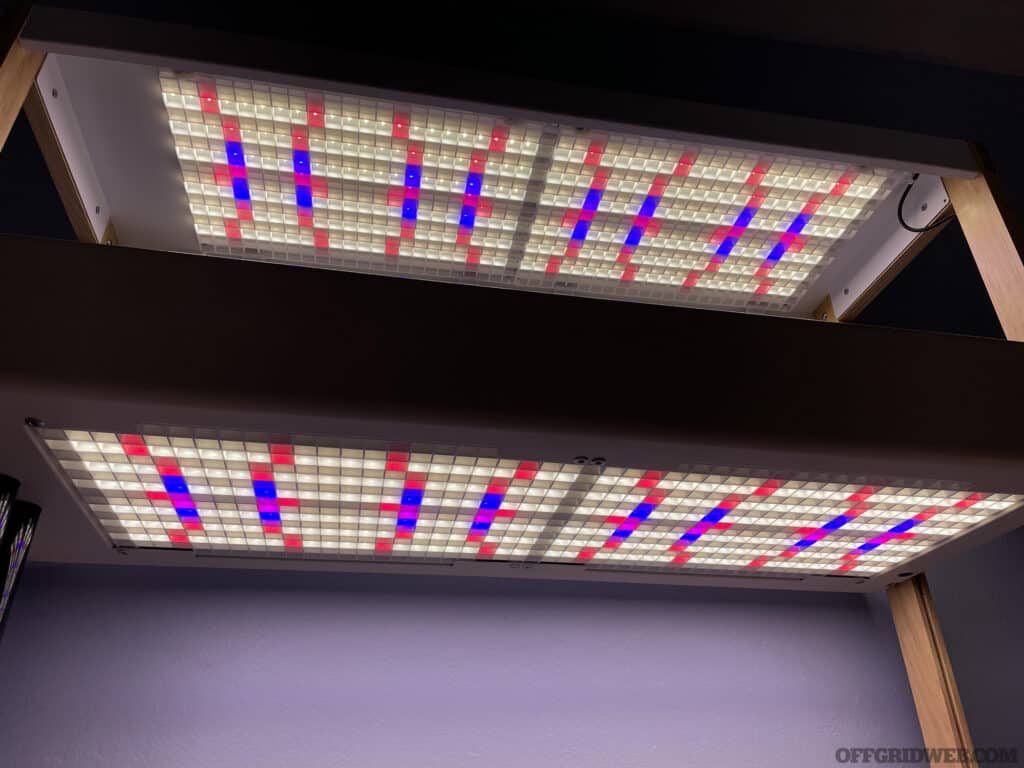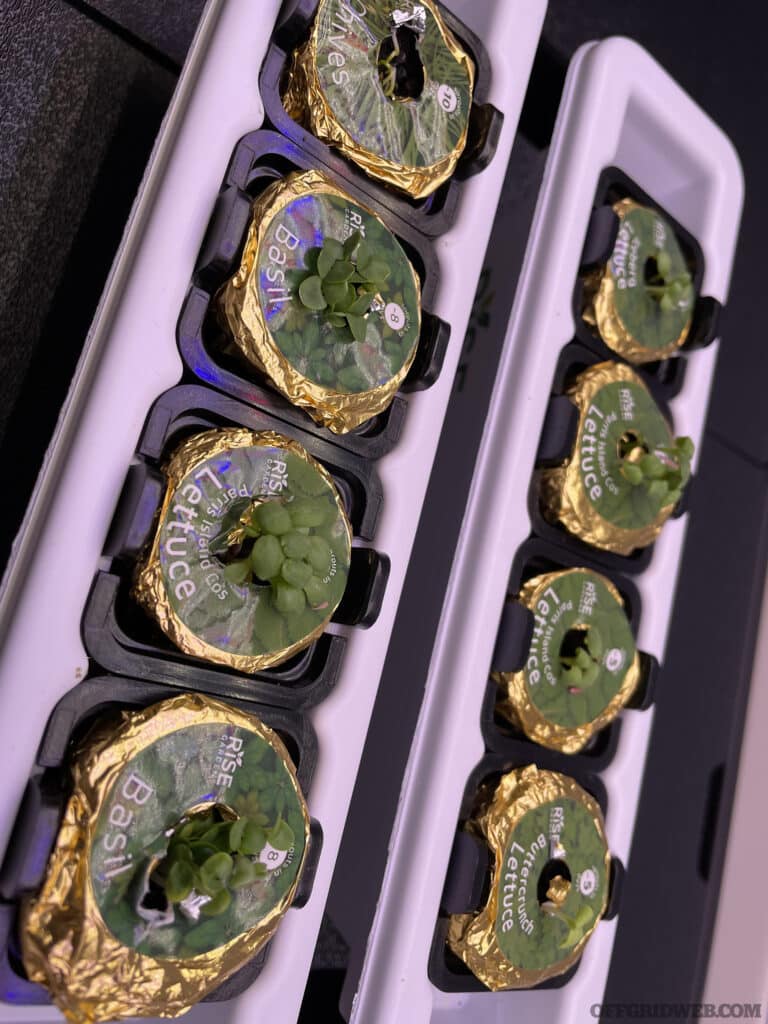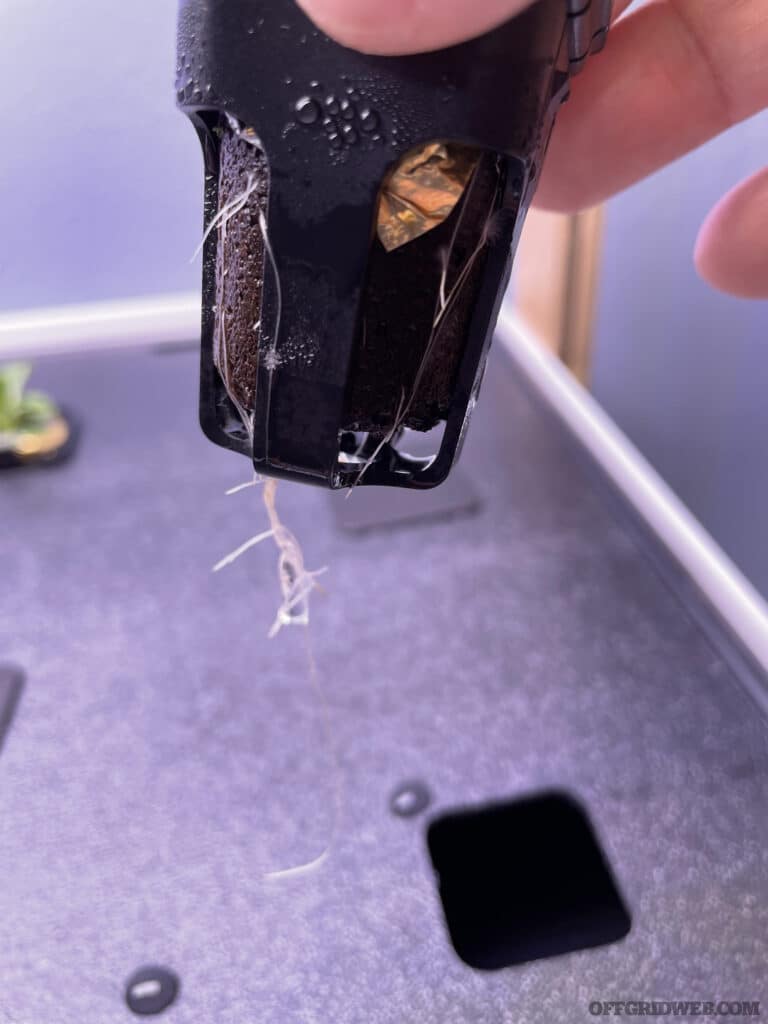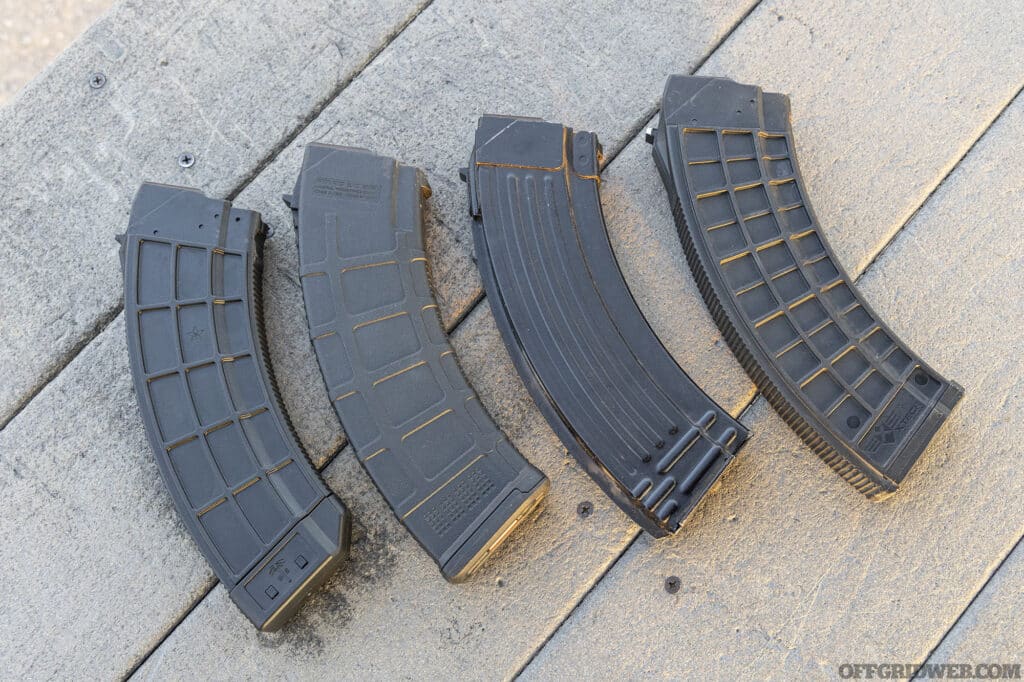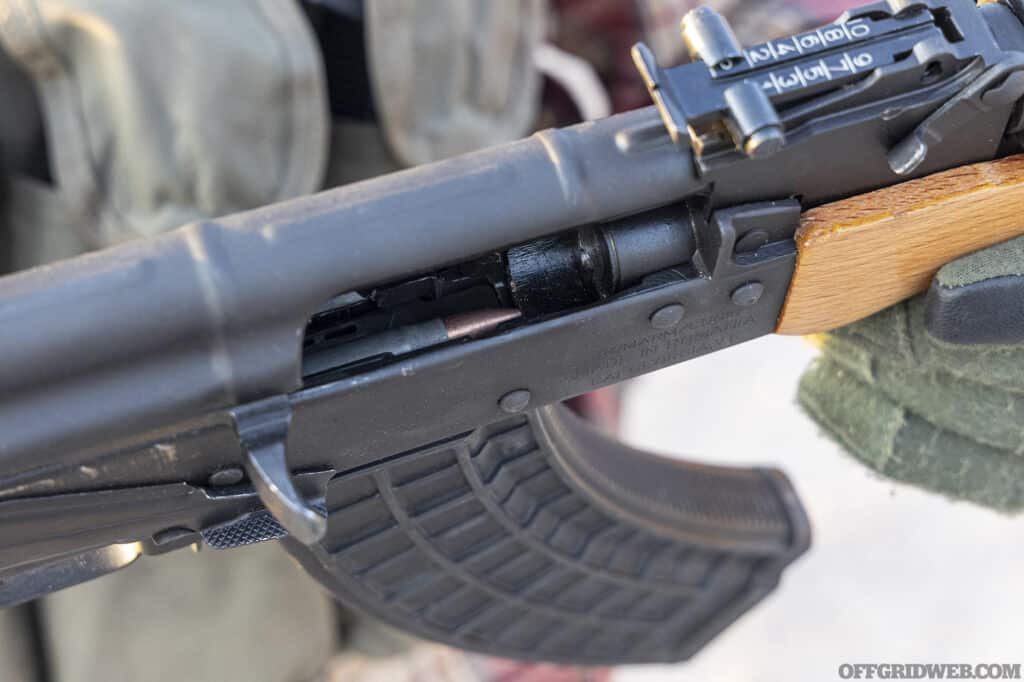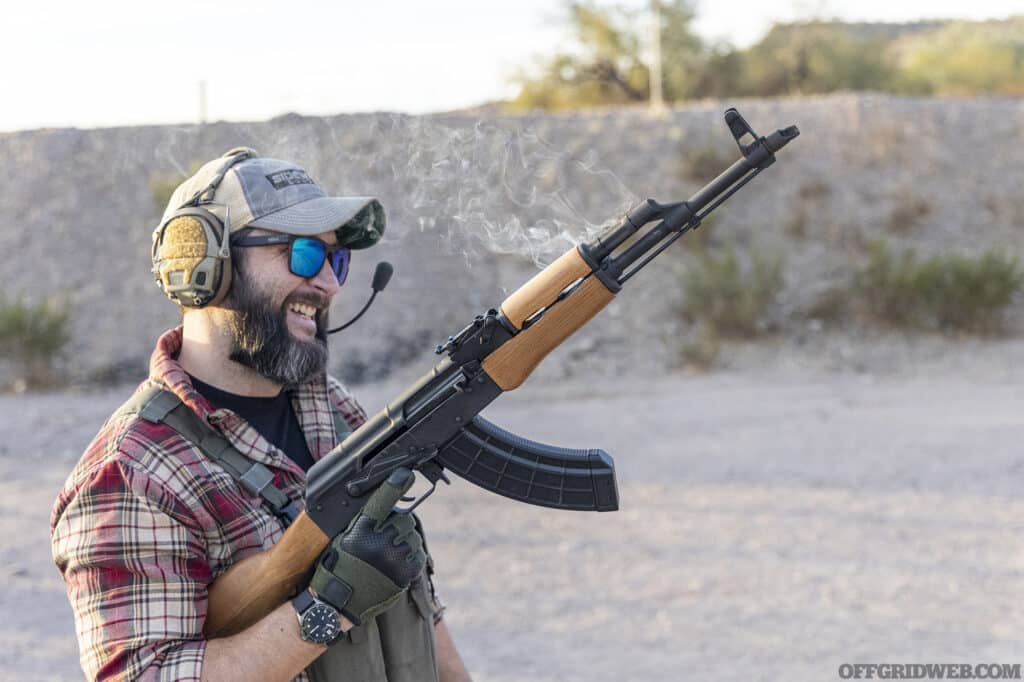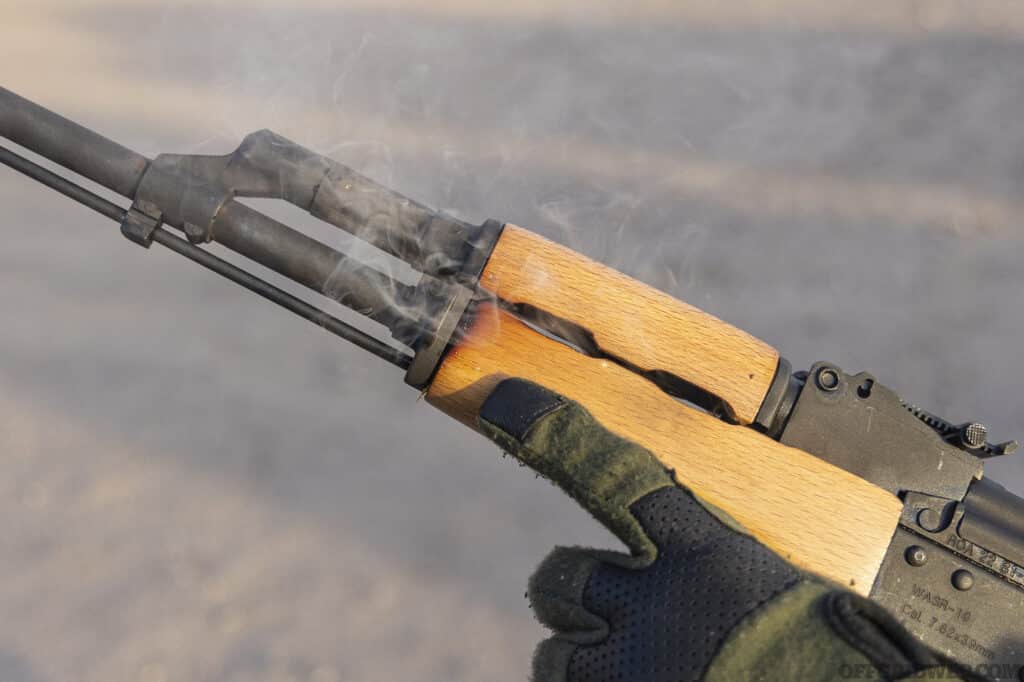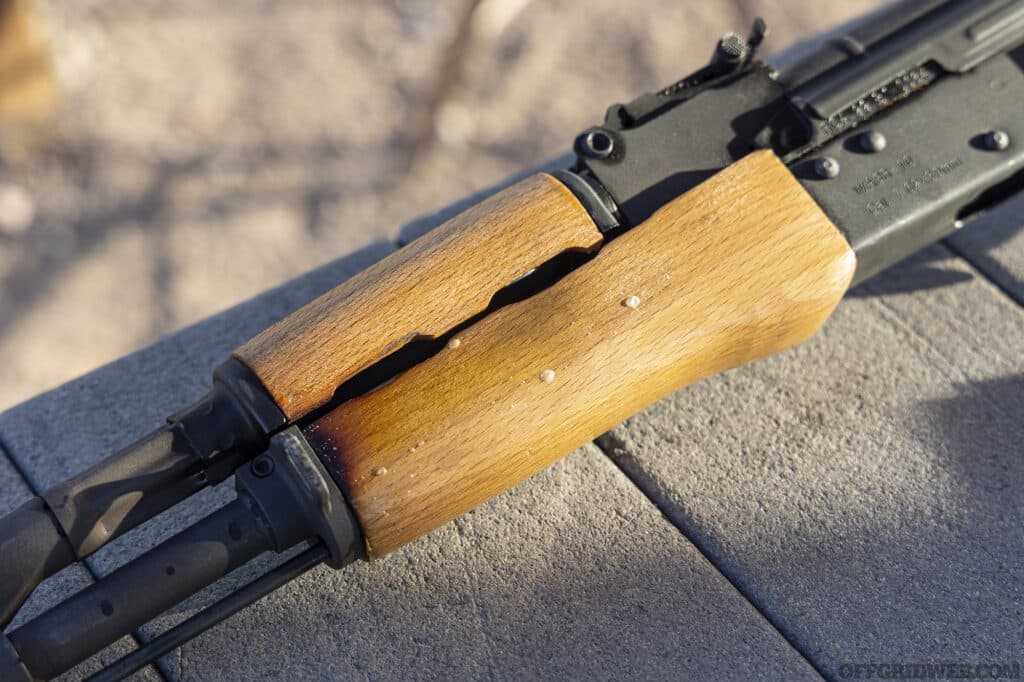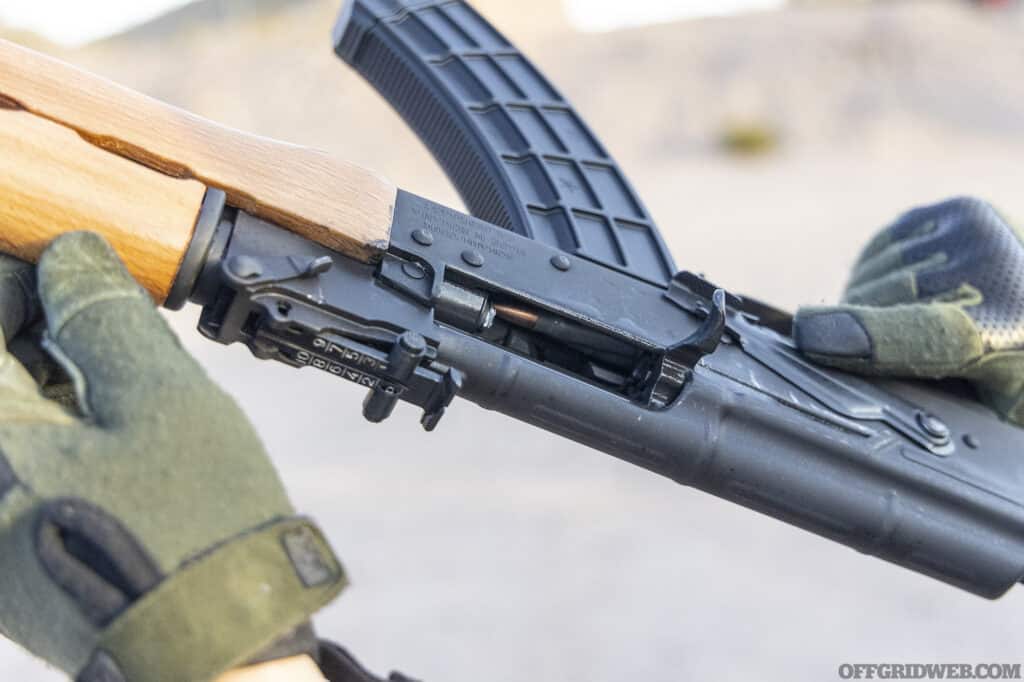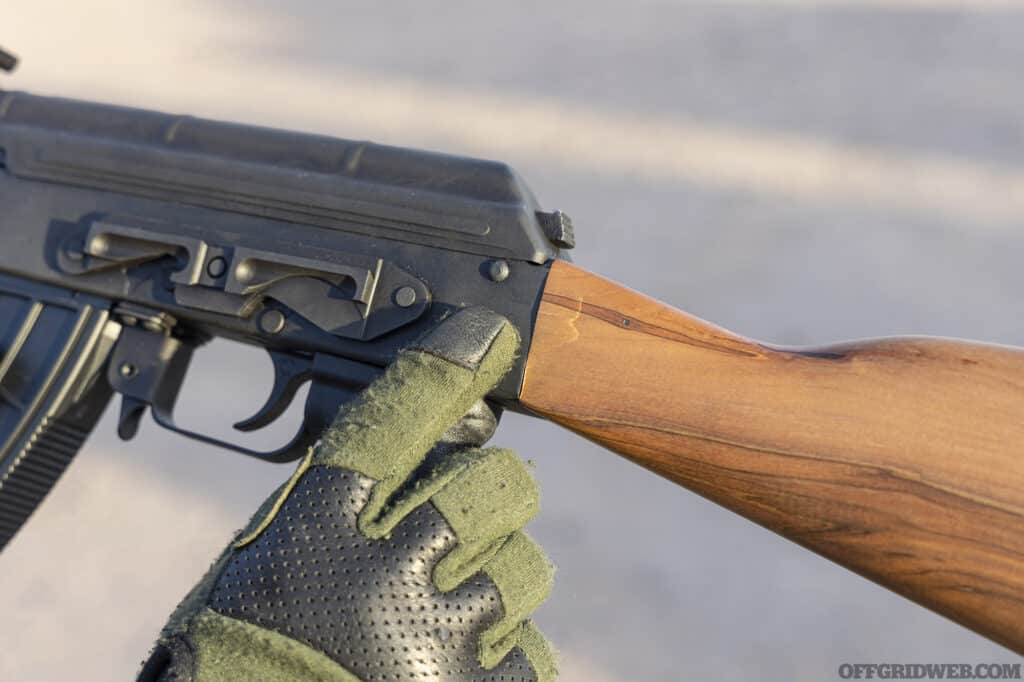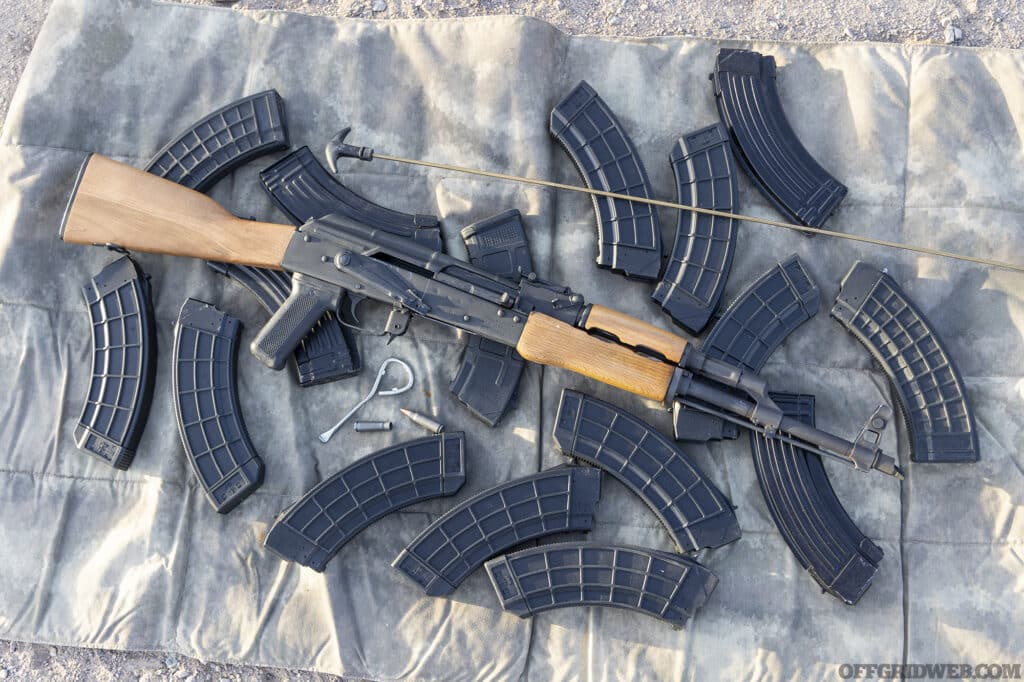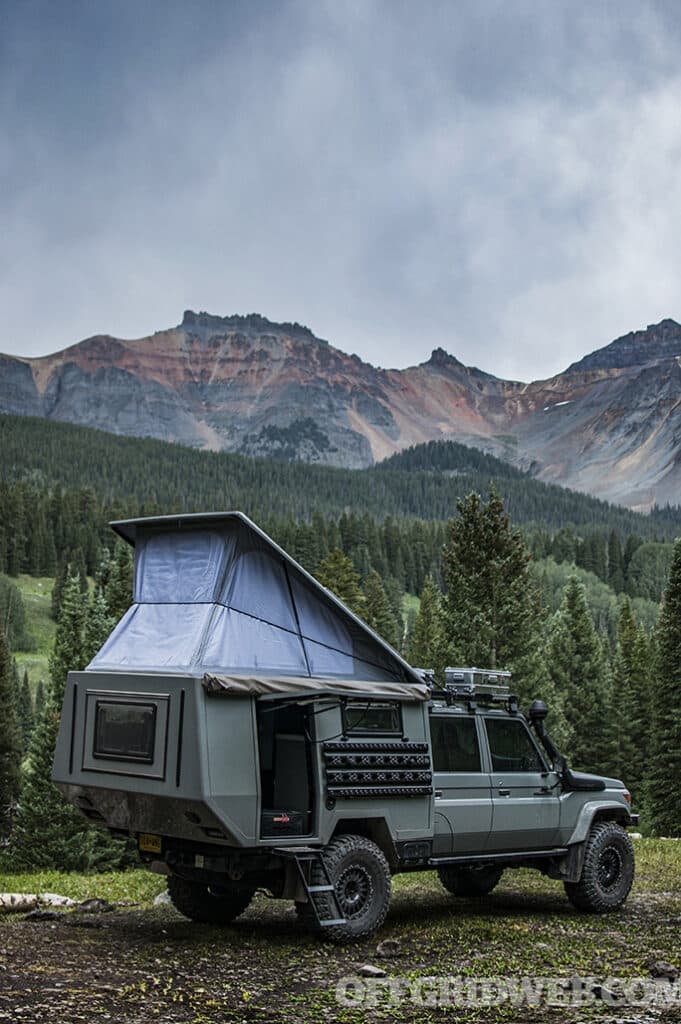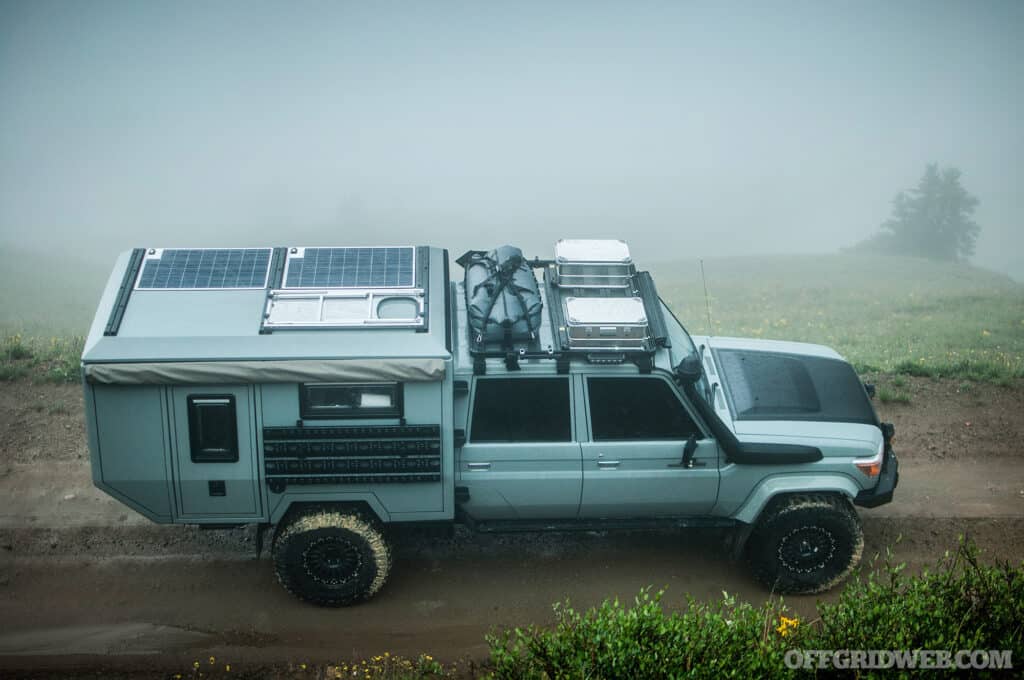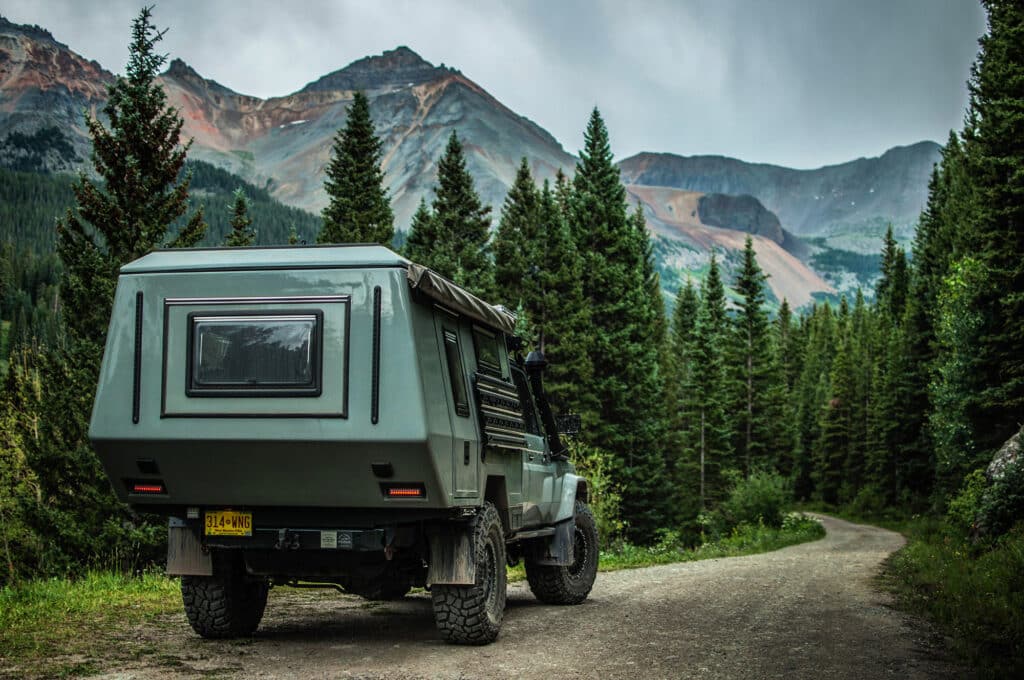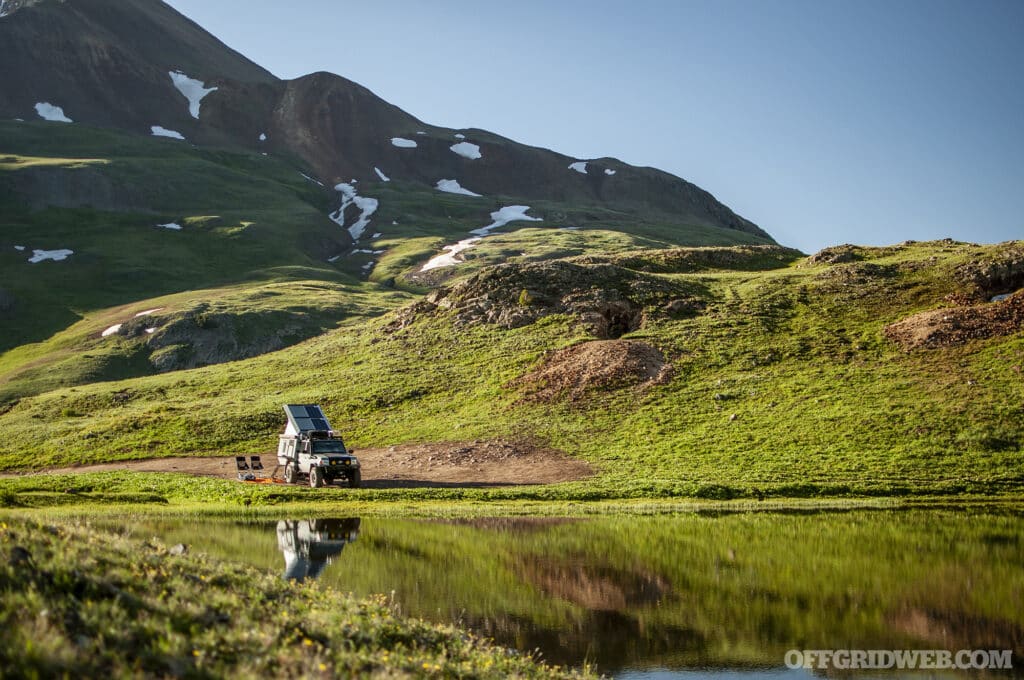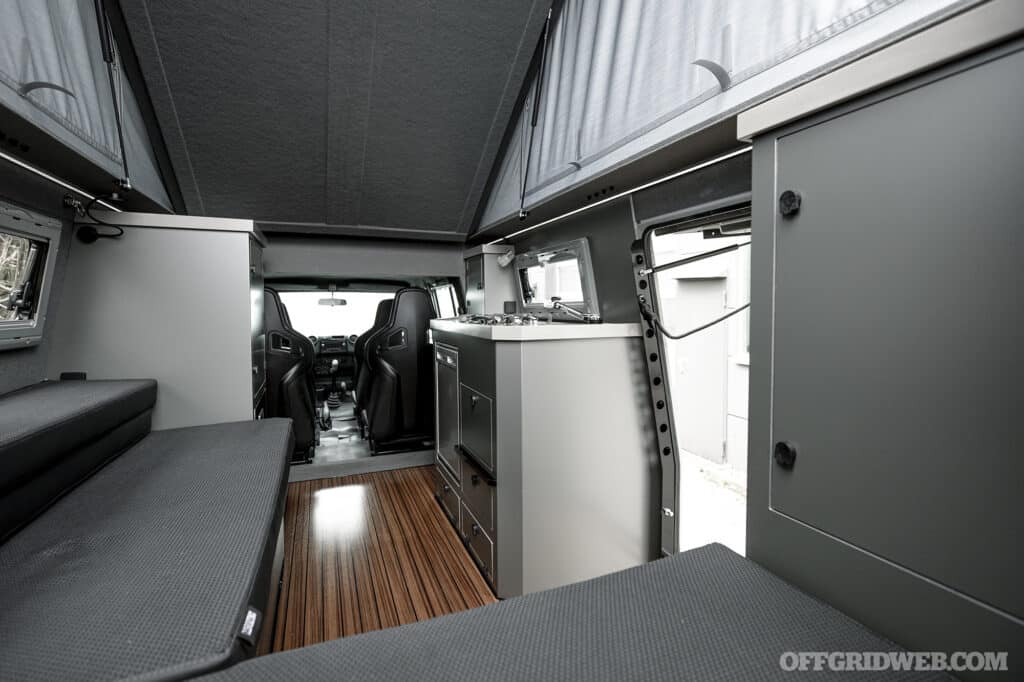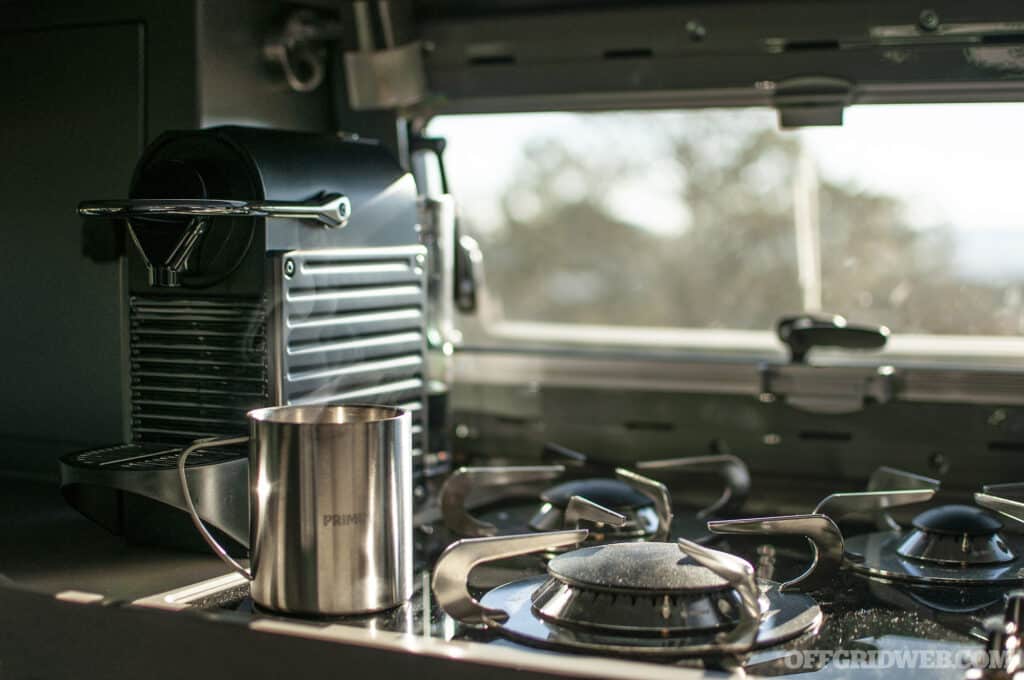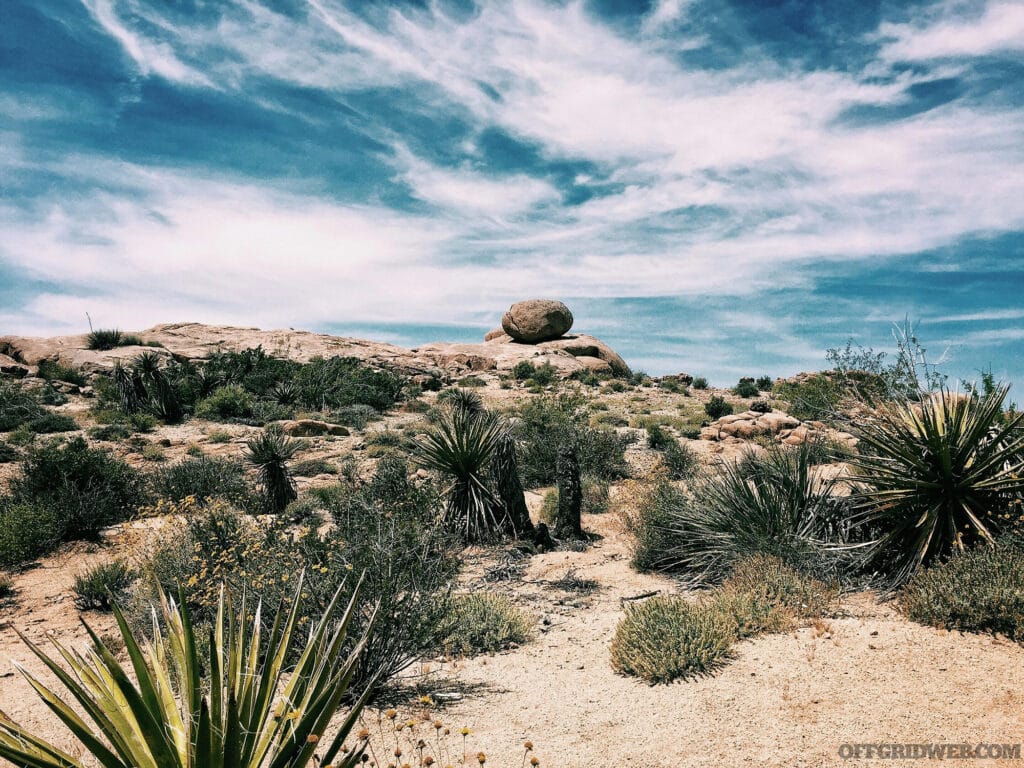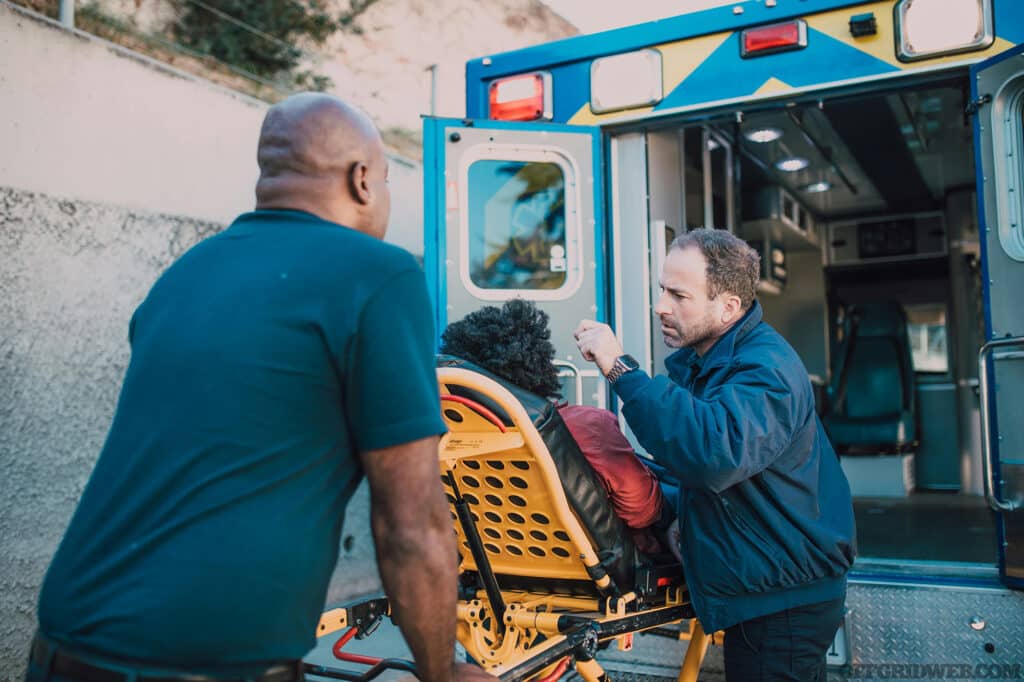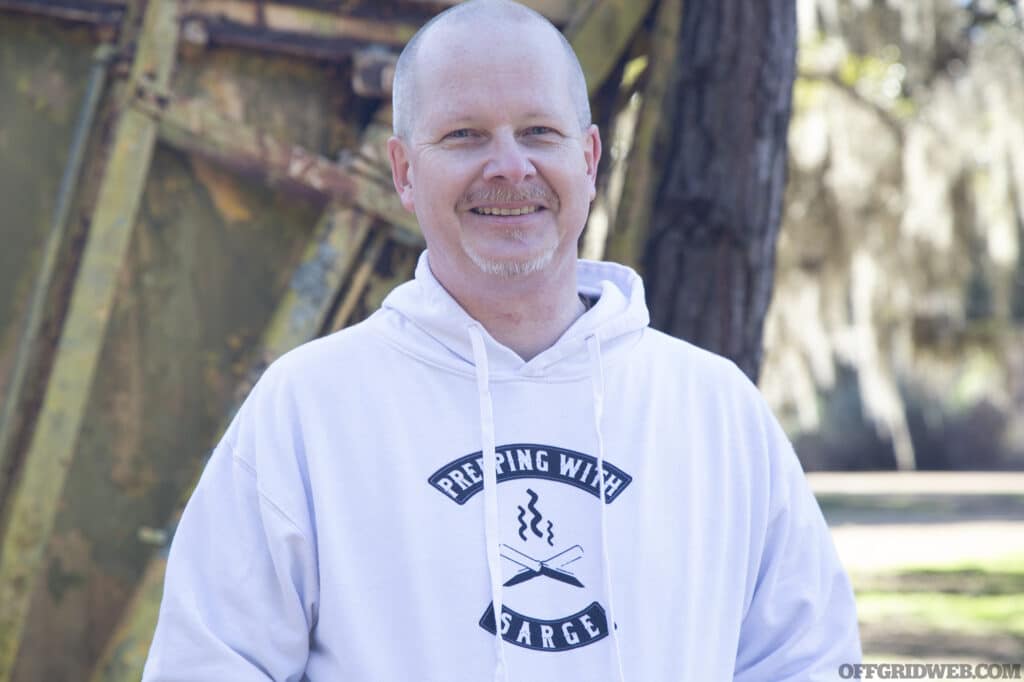In This Article
Ammo cans are the Tupperware of the emergency preparedness world. Although they were originally intended to carry loose ammunition or machine gun belts, we’ve seen these rugged, inexpensive stamped steel boxes repurposed to contain everything from tools and camp cooking utensils to fishing tackle, portable radios, and medical gear. Some DIYers even outfit them with batteries and USB ports to function as a portable charging station, or with speakers to serve as a boombox. Washington-based gear company Ignik Outdoors came up with their own ammo can contraption — a portable propane fire pit called the Ignik FireCan — and has continued to develop and upgrade it with some clever features.
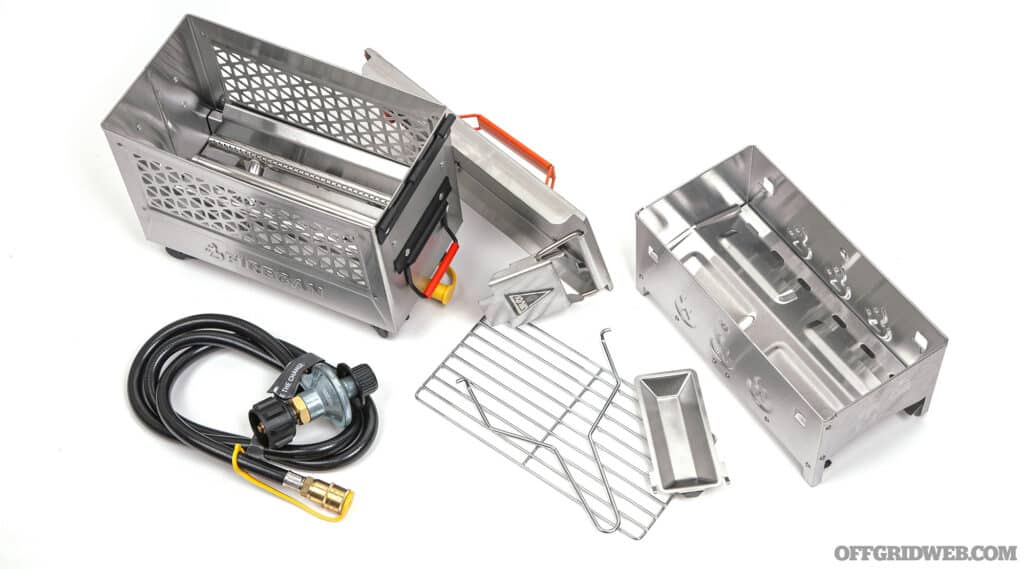
Above: The FireCan Deluxe includes a grill insert with removable spring-loaded handle, a drip tray, and a 5-foot quick-release hose with an adjustable regulator. If you pack everything carefully, it all fits inside the FireCan for easy transport.
Buy or DIY?
The concept of converting an ammo can into a mini propane fire pit is nothing new. If you’re handy, you can make one by drilling a hole in the side of an ammo can, inserting a capped piece of pipe with some smaller holes drilled in it, and adding a fitting on the end to attach a propane tank. You can buy these cans in the form of DIY kits or complete units from a variety of vendors. You can also make a shotgun with some pipe, a roofing nail, and a 2×4 from the hardware store … but a Beretta 1301 it ain’t.
The moral of the story is that DIY projects are fun and can save you some money, but sometimes it’s worth paying more to have a thoughtfully engineered product with added features and quality-of-life improvements. Such is the case for the Ignik FireCan, especially its Deluxe package.
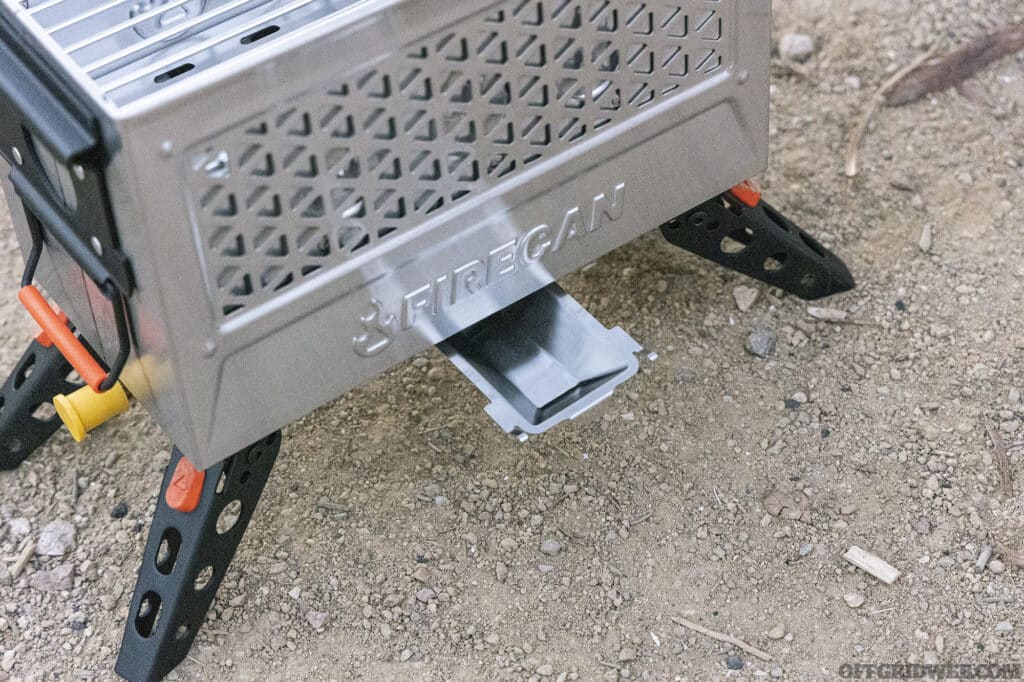
Above: The removable drip tray gathers any residual grease from your food, making cleaning easier and keeping mess to a minimum.
The standard edition of Ignik’s FireCan ($200 MSRP) is a powdercoated steel can with mesh grates cut into each side to increase airflow, heat transmission, and visibility of the flames. It also has heat-resistant silicone carry handles and four folding legs that lift the can off the ground, reducing the risk of your fire scorching the ground or spreading out of control. Rather than a basic screw-on propane connector, it has a locking quick-release fitting and includes a matching 5-foot hose with adjustable regulator. After removing the can’s lid and unfolding its legs, just connect the regulator to any standard 20-pound/4.6-gallon propane tank, or to one of Ignik’s convenient 5-pound/1.2-gallon Gas Growlers, as seen in this article. Then, click the other end of the hose onto your FireCan, light it through the included access hole, and enjoy your portable heat source.
For more radiant heat, you can fill the can with some fire rocks to increase its thermal mass. Ignik offers tumbled lava rocks which weigh 5 pounds, as well as ultra-lightweight 1-pound ceramic “Moon Rocks” that can be used to fill your FireCan. Each of these also varies the flame pattern to create a more natural fire pit experience, as opposed to the propane burner’s symmetrical jets.
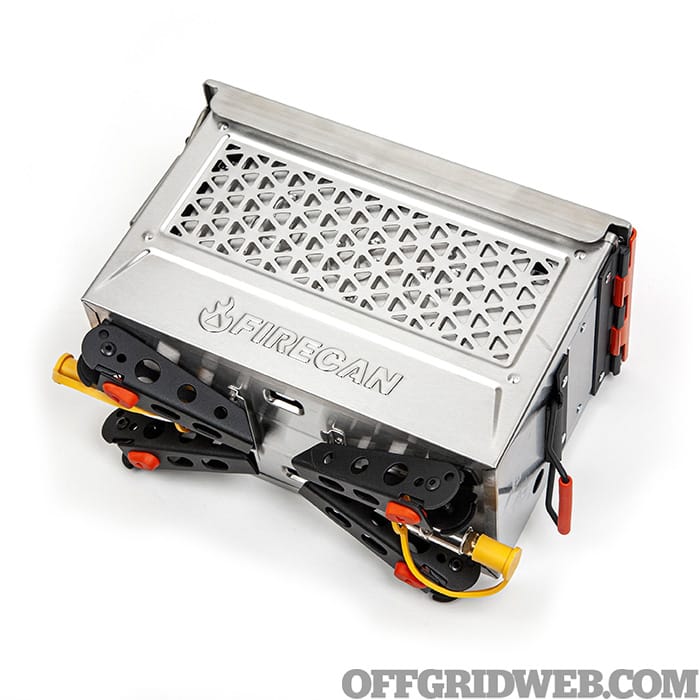
Above: The Deluxe Gas Growler comes with a black padded carrying case as well as the standard adapter hose. With this setup, we won’t be buying any more of those short-lived green propane bottles for our camp stove.
FireCan Deluxe
Recently, Ignik introduced the FireCan Deluxe ($300 MSRP), which improves upon the regular FireCan in several areas. The first thing you’ll notice is its brushed silver finish, which indicates stainless steel construction. This will be more corrosion-resistant than the black powdercoated carbon steel, even if it gets a little scratched and banged up over time. It also discolors naturally into bronze and gunmetal hues with use, developing a unique patina. But its biggest difference is revealed when you open the lid.
Beneath its lid, the FireCan Deluxe features a removable grill insert that’s constructed from more stamped stainless steel. Its inner surface is ramped and slotted to funnel drippings down gutters and into a removable drip tray that sits in a slot at the base of the unit. Four hooks in the corners of the grill insert hold a 5×10-inch rectangular wire grill — the perfect size for hotdogs, hamburgers, chicken breasts, veggies, and other small items. Granted, you won’t be making a feast for the whole family on this setup, but it’s perfect for cooking a quick meal for one or two people.
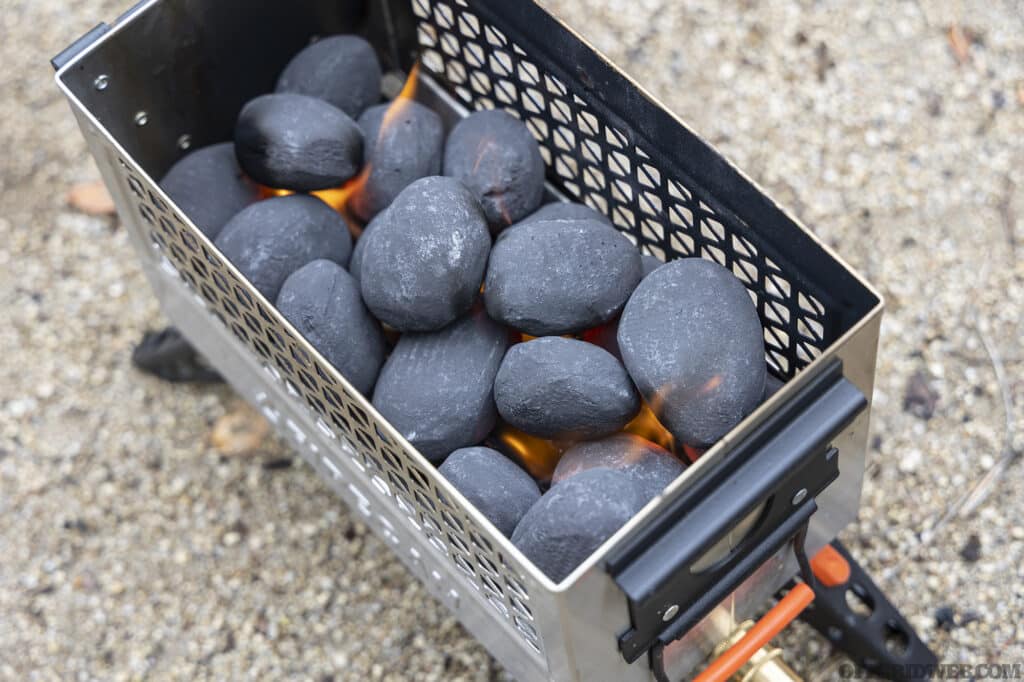
Above: These ultra-light Moon Rocks resemble charcoal briquettes, but they’re actually made from blown ceramic. Placed atop the burners, they make the flames dance and help your FireCan give off more radiant heat.
Initiating Grill Mode, as Ignik calls it, requires a slightly different setup than Fire Pit Mode. The FireCan Deluxe contains three burner pipes, rather than two on the original FireCan. The two outside burners are connected to a propane inlet port on one end of the can, and have holes that are angled upward, producing tall yellow-orange flames for Fire Pit Mode. With its propane inlet on the other side of the can, the center Grill Mode burner has its holes arranged horizontally, creating a low blue flame similar to what you’d see on a kitchen stove or propane barbecue. The end result is precise, even heat that cooks food quickly without engulfing it in yellow flames and leaving it tasting like propane.
Remembering which end of the FireCan to connect your propane tank to would be tricky, so Ignik etched helpful pictograms onto each end of the stainless steel box. Next to the Grill Mode inlet, there’s an image of the grill insert and a hot dog on a skewer; the Fire Pit Mode inlet shows the can with tall flames coming out of it.
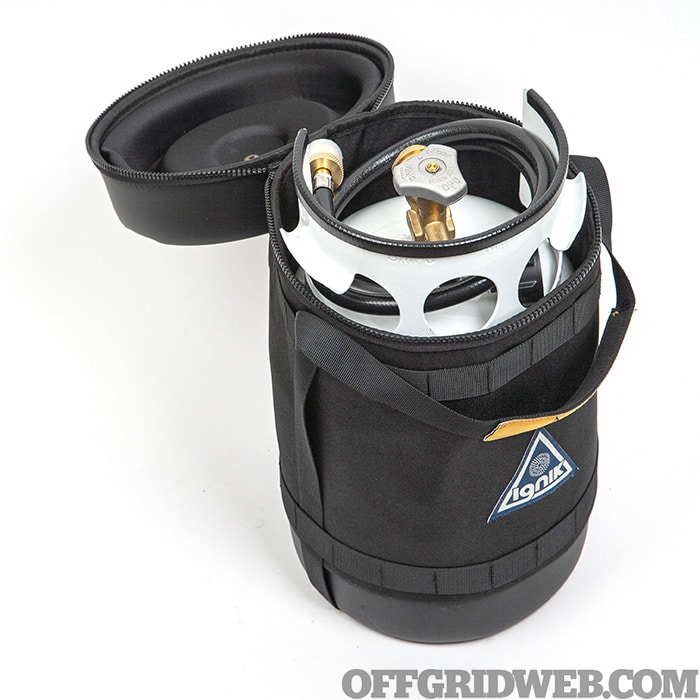
Gas Growler Deluxe
Although the FireCan can be connected to any run-of-the-mill 20-pound propane tank, such as those found under most barbecue grills, lugging one of those around with such a small fire pit seems impractical. The FireCan’s compact and portable design had us wanting a more portable fuel source. Unsurprisingly, Ignik has a solution: the Gas Growler.
The most basic version of the Gas Growler ($110) is essentially a standard 5-pound propane tank with an Ignik logo and a few extras. It has rubberized strips applied to the sharp edges on the top and bottom of the tank, preventing it from digging into your palm as you carry it or sliding around on smooth surfaces. It also includes a 4-foot adapter hose that allows this larger tank to be used with 1-inch 20UNEF propane devices — the kind that normally require disposable 16-ounce green propane bottles. So, in addition to fueling the FireCan, we can use this tank with our Camp Chef stove and other propane-powered camping gear.
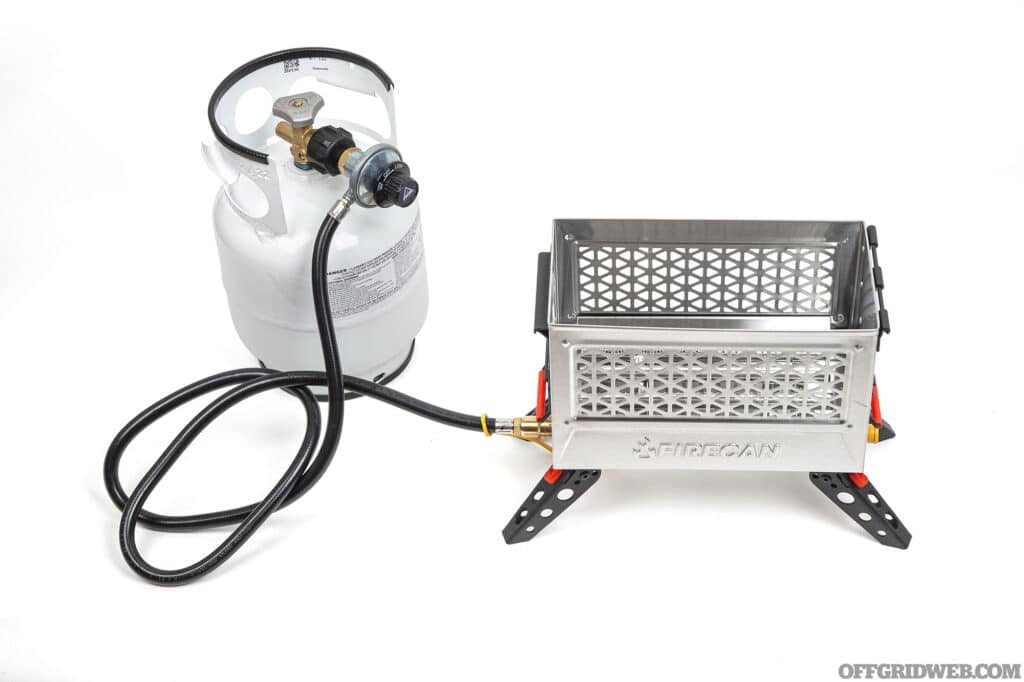
Speaking of green propane bottles, they’re a hassle to carry and swap out, and they’re also not environmentally friendly due to their single-use, disposable design. A full Gas Growler lasts as long as five green bottles, but refilling it costs about the same as one ($5) and you won’t be packing out a bunch of empty and partially used bottles at the end of each trip. It’s less wasteful and more cost-effective — that’s a win-win.
The Gas Growler Deluxe edition ($150) adds a high-quality fitted carrying case in either a retro-style white/orange/brown color scheme or plain satin black (an easy choice for us). The case adds cushioning to protect the tank, makes it easier to carry, and has enough room for the hose, a wrench, and other small items under its zippered lid. The outside of the case is lined with two rows of nylon MOLLE webbing that could be used to strap the tank down or retain tools.
Granted, if you don’t care about the hose, edge protectors, and carrying case, you can save some money and buy a generic 5-pound propane tank at Home Depot for about $50. The FireCan works just fine with one of those.
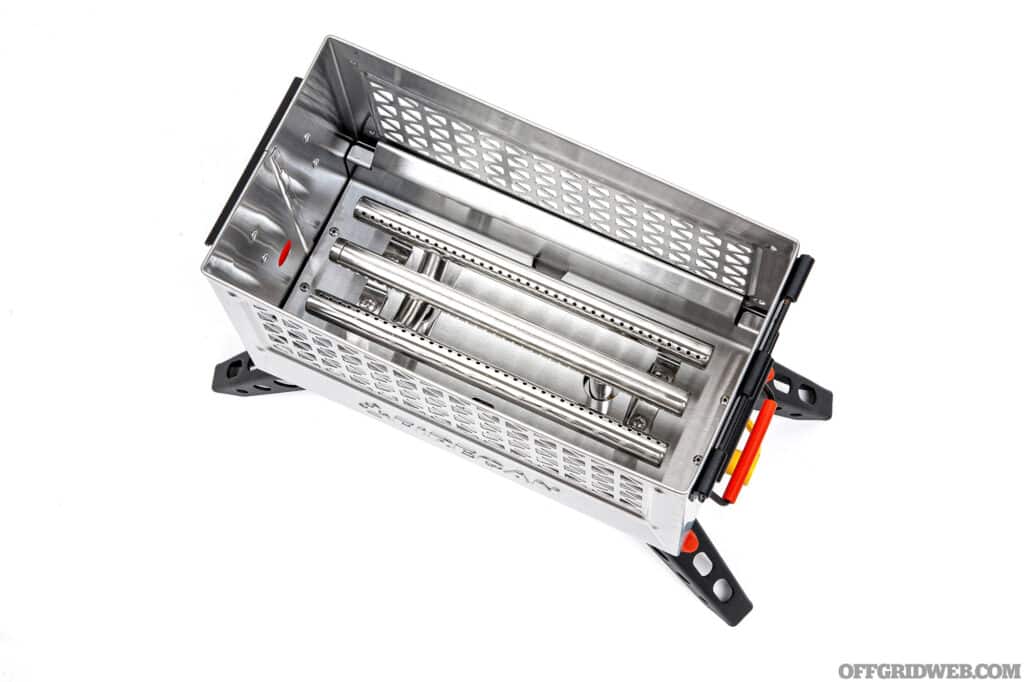
Above: At the base of the FireCan, two of the burners are angled upward to give off tall, warm flames in Fire Pit Mode. The third burner produces a row of smaller blue flames down the middle for Grill Mode.
In the Field
We spent several months testing our FireCan and Gas Growler, both for fire pit duties and for cooking meals. It’s pretty much perfect for overlanding adventures where space inside the vehicle is already occupied by lots of other gear. A full-size fire pit would normally be considered a luxury item for those trips — nice to have, but not really worth packing and unpacking at every stop. The FireCan and Gas Growler, however, are small and light enough that they’re easy to justify bringing along. The multi-functional nature of having a 5-pound propane tank to power a Camp Chef stove makes it an even easier decision.
Admittedly, the heat from the FireCan isn’t nearly as powerful as a full-blown campfire, but on a chilly evening, two to four people can sit close to the FireCan and still remain comfortable. Unlike a campfire, it’s extremely fast to set up and tear down. In less than 30 seconds, you can get a roaring fire going, and (once it’s cooled down for a few minutes) you can pack it up in a similar time frame. In situations where you may only want a fire for an hour or two before bed, that’s really convenient. The FireCan also doesn’t require gathering enough firewood to sustain a campfire, which usually ends up being a lot more wood than you think you’ll need.
As for grilling, the FireCan Deluxe worked great for hamburgers and hot dogs. The adjustable regulator included with the FireCan made it easy to fine-tune the heat source as our food cooked. Grease collected nicely in the drip tray, and while cleaning wasn’t as easy as a flat-top grill, it wasn’t too difficult. We’d recommend cleaning the grill thoroughly before packing or transporting it — if there’s any grease left on it when you pack up the FireCan, it’ll act as a grease-scented air freshener inside your vehicle until you disassemble and wash it.

Above: A quick-detach collar makes it simple to attach the FireCan to a propane source without leaks or threading on connectors.
A Note About Fire Restrictions
In wildfire country, it’s normal for the local forestry service to issue bans on open campfires during the dry months. This is a major bummer for anyone who’s planning a camping trip, because sitting around an LED lantern doesn’t have the same appeal as sitting around a warm fire. Thankfully, there are usually exemptions for propane-fueled fire pits and stoves — this means that the FireCan is one of the few ways to safely and legally have a fire at the campsite during wildfire season. Check your local laws to see if this is also true in your area, but if it is, it’s a major selling point for the FireCan and other propane fire pits.
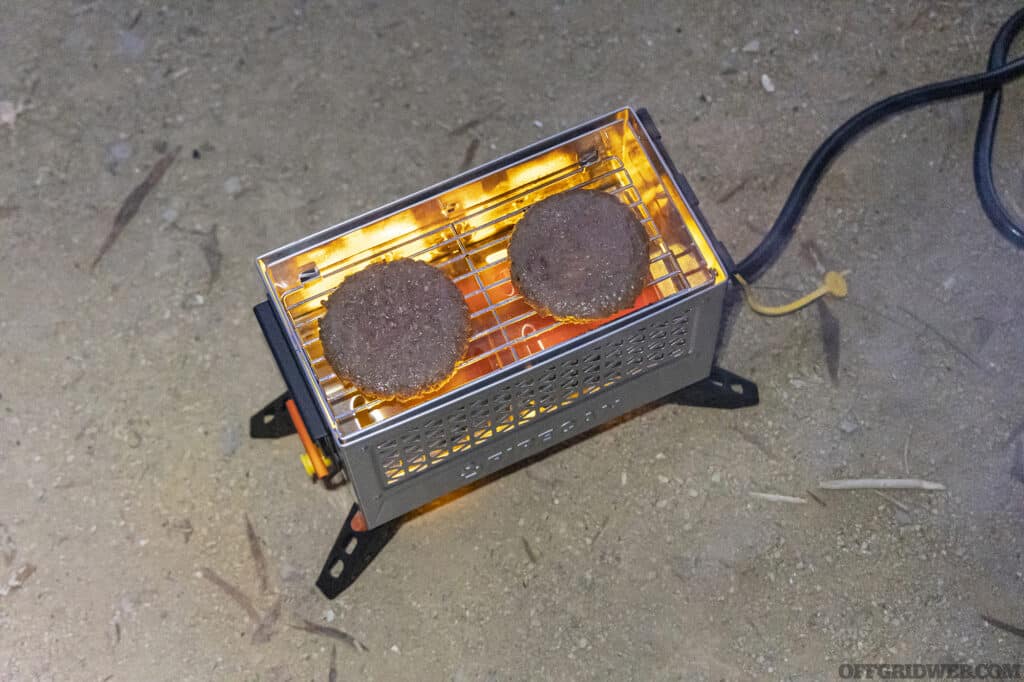
Above: The size of this grill is ideal for two burger patties. If you’re making cheeseburgers, drop the FireCan’s lid back on to trap the heat and melt the cheese slices faster.
Closing Thoughts
The Ignik FireCan Deluxe is a versatile tool for camping, overlanding, family outings, and even for use on the back patio at home. Everyone enjoys watching the “Ranger TV” — an old Army Ranger nickname for the hypnotizing allure of a fire — and basking in the warmth it gives off. Although we mostly found ourselves using the FireCan in Fire Pit Mode, the Deluxe edition’s Grill Mode is a nice added feature, and it allowed us to quickly whip up a few burgers or brats at campsites that didn’t have other cooking amenities. The Gas Growler also pairs nicely with the FireCan to create a portable system, so we can bring an instant heat source wherever we go.
Sources
- Ignik Outdoors: ignik.com
Read More
Subscribe to Recoil Offgrid's free newsletter for more content like this.
- Transitional Food Preps: Staying Fed Between Storage and Cultivation
- Grid-Down Chef: 6 Outdoor Cooking Methods
- Primitive Technology: Cultivating and Cooking Yams
- Catching, Cooking, & Eating Giant Grubs
- Video: Cooking & Eating Yucca
Editor's Note: This article has been modified from its original print version for the web.

